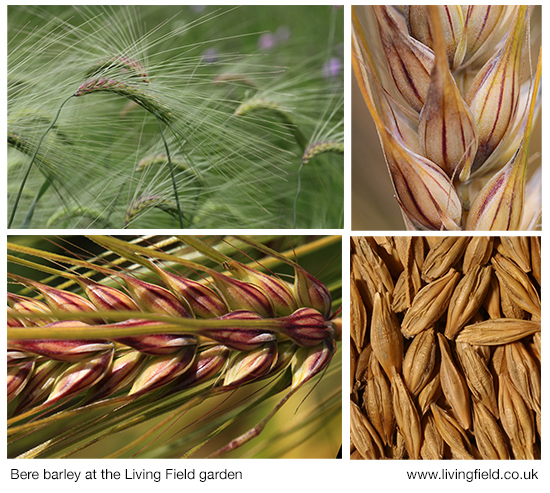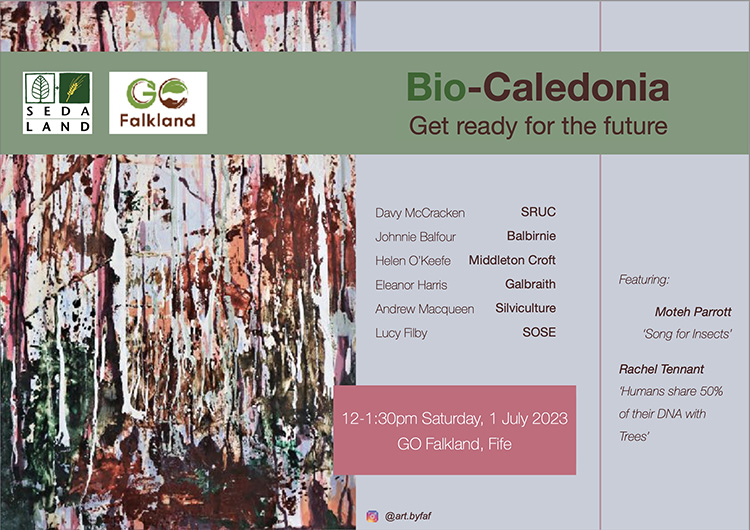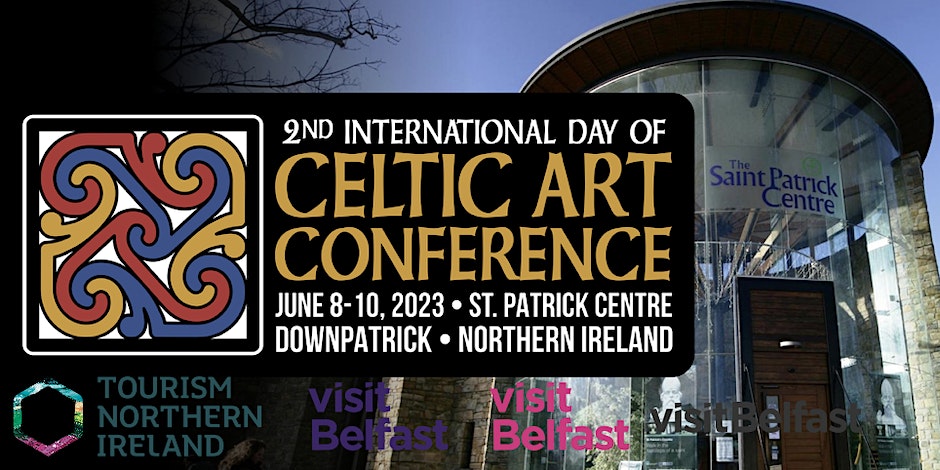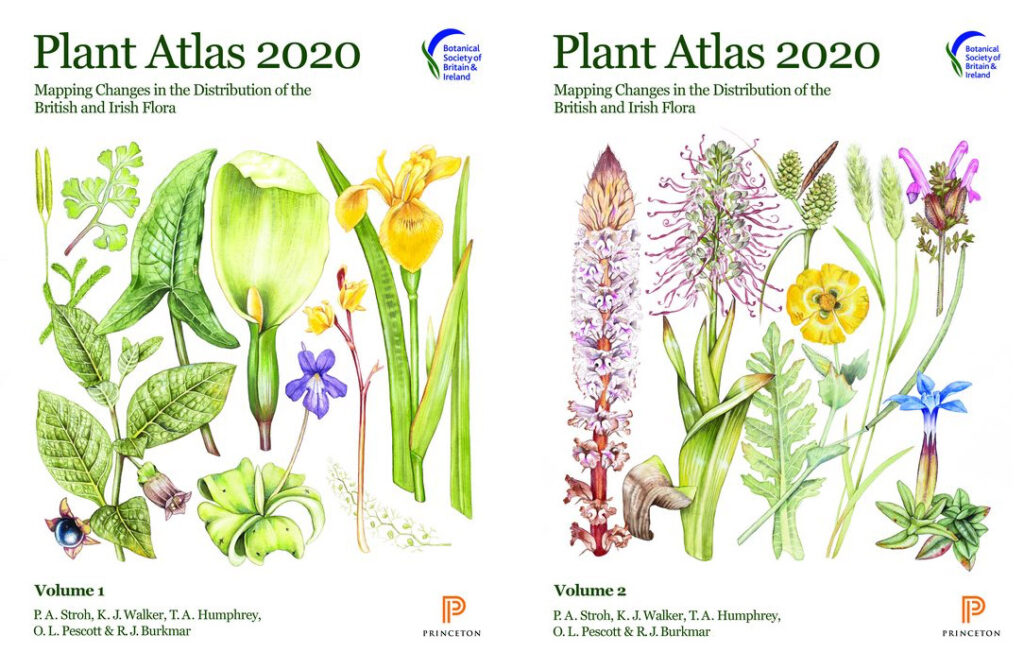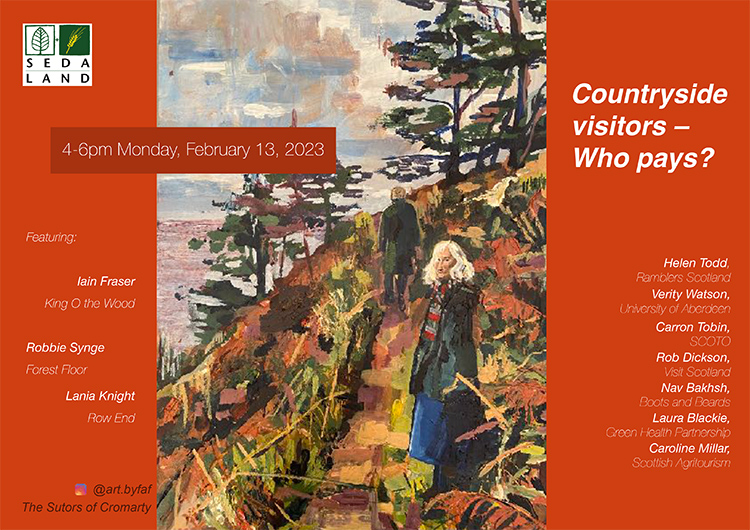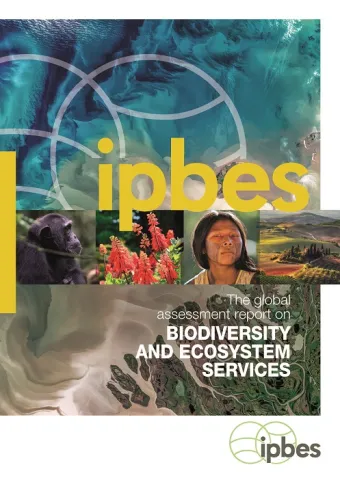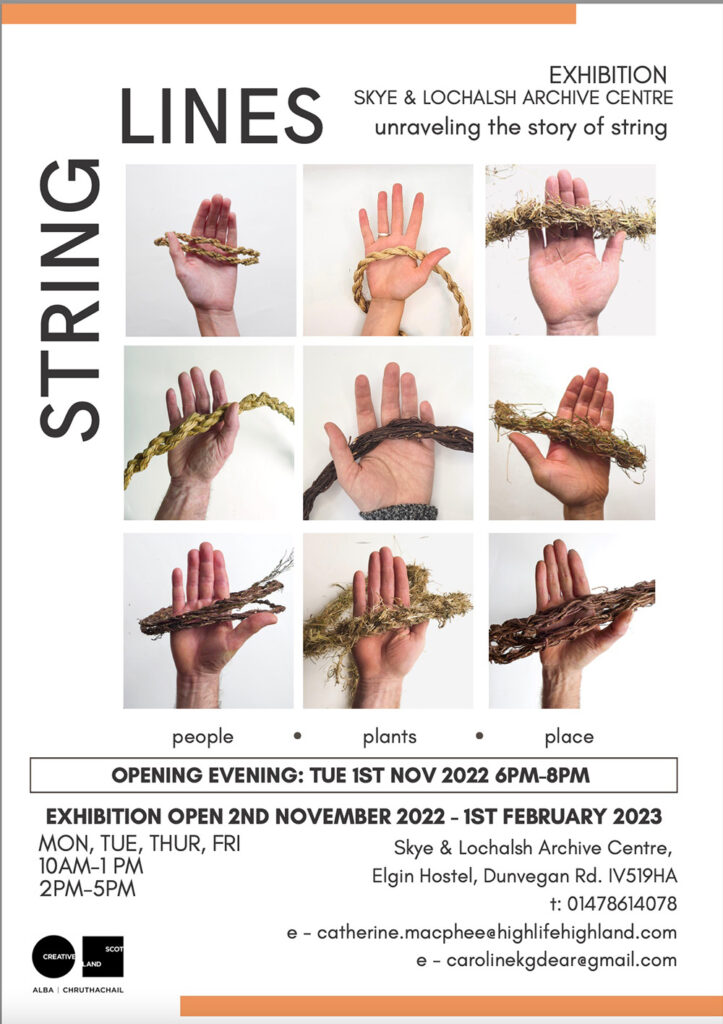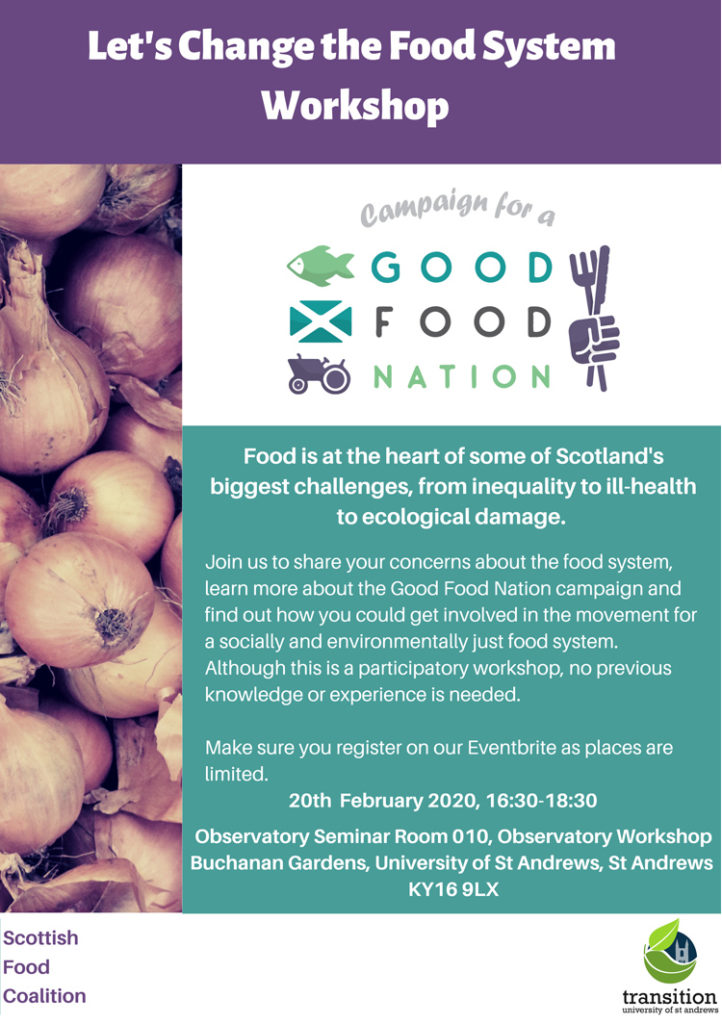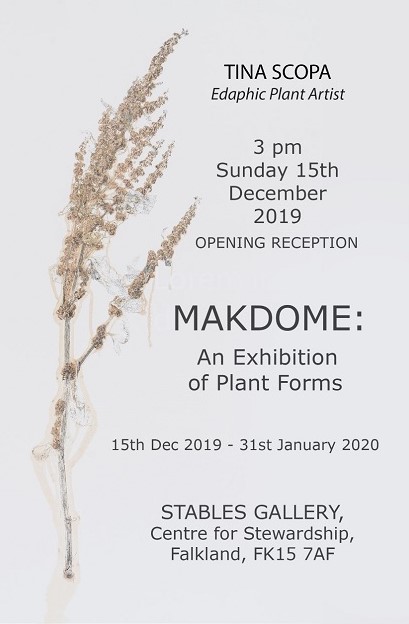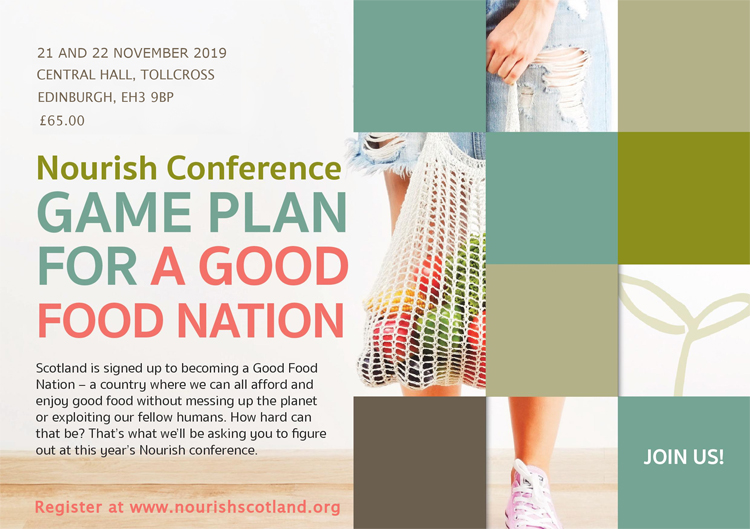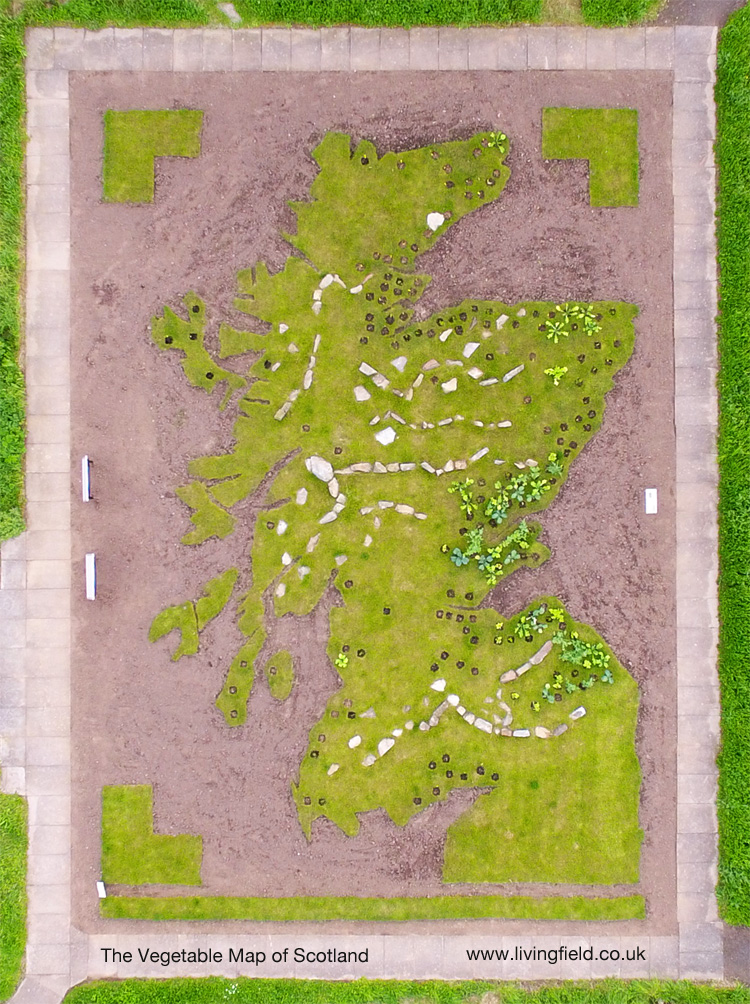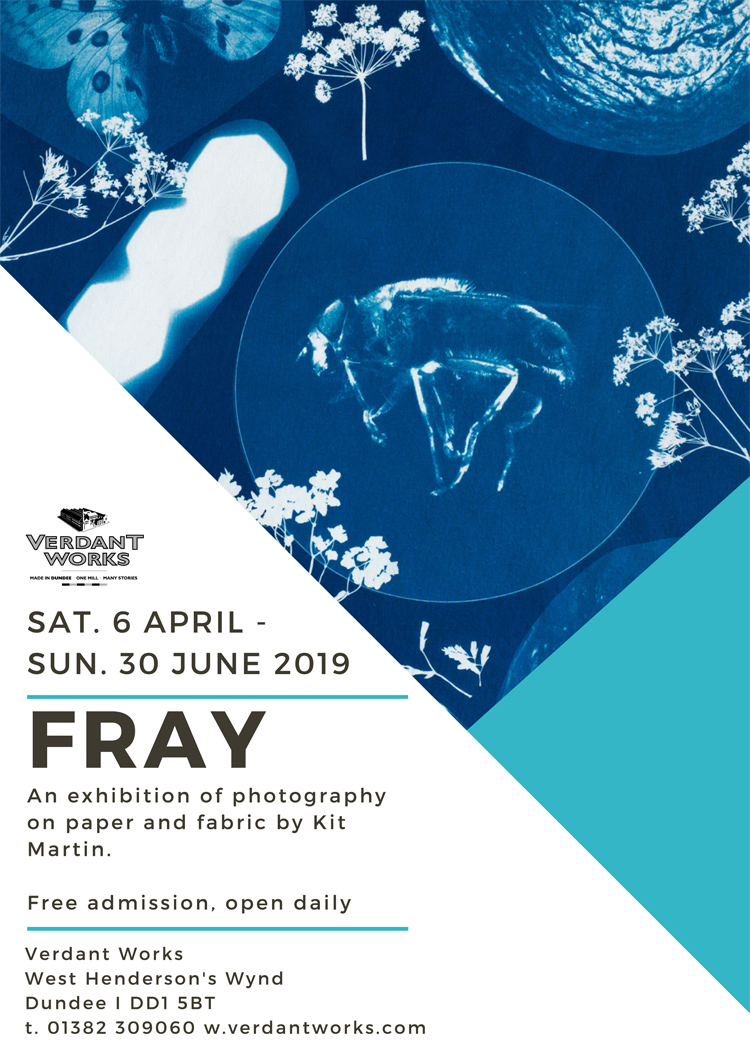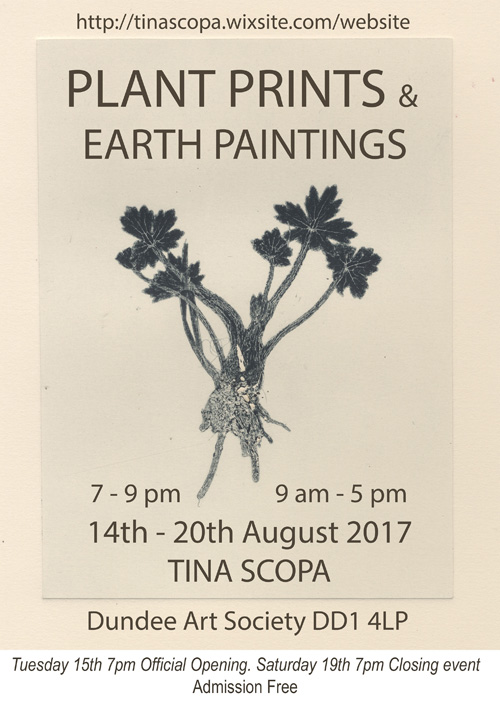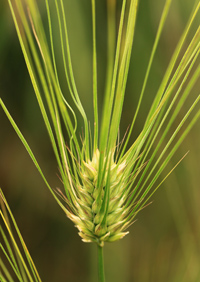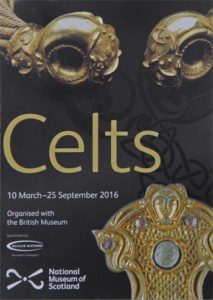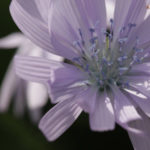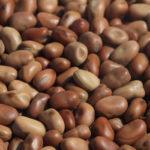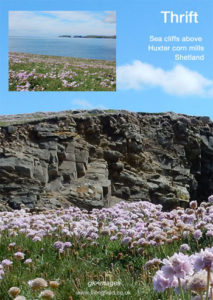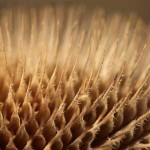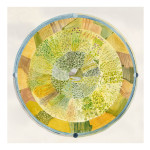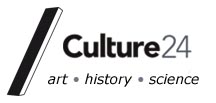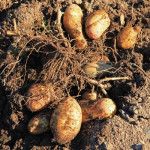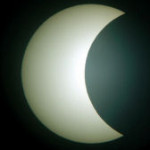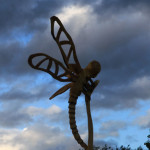SEDA Land – Solving the Land Use Jigsaw
A discussion about integrated land use. Wednesday 17th July 2024, Falkland Estate, Fife. In the afternoon, time TBC.
Major changes to the national landscape are going to be required if Scotland is to meet its 2045 net zero target. We will need to layer many uses on to a limited supply of land using an ecosystems approach.
This SEDA Land event on integrated land use could help shape the Scottish Government’s delivery plan for its Third Land Use Strategy 2021-2026. We will look at how Scotland might balance the competing needs of land for food production, timber for construction and bioproducts as an alternative to fossil fuels, at the same time as allowing space for biodiversity, carbon sequestration and recreation. Should we have national strategic zoning of land use, or should this be done at a regional, or local grassroots level by organisations such as ‘farmer clusters’?
This event forms part of GO Falkland – Groundswell Outreach – the two day regenerative farming festival on 17-18 July 2024, again at Falkland Estate in Fife. Join our expert panel representing different sectors and regions to discuss these issues.
For further info, notes on the artists who will perform and to book tickets – SEDA and Go Falkland.
Restore nature now | March | London
Over 60 thousand people assembled and marched peacefully in London on 22 June 2024 for Restore Nature Now. Why – biodiversity continues to decline, governments are too slow to act. Many organisations combined their resources and membership to support and join the march. More on the Restore Nature Now web.
Nature is an enormous treasure and it’s in our hands to restore it. But right now we’re failing it.
RNN web site
Agriculture and forestry can do much to support threatened species and habitats. But it should be much more widely acknowledged that their success depends on living organisms – microscopic fungi and bacteria in the soil, tiny invertebrates that break down organic matter and control insect pests, and the flying insects that pollinate. We call this Biodiversity for Agriculture or B for A. Get this right and the wider biodiversity of farmland will flourish (Ed.).
Farming Fit for the Future – Alyth Museum
The Farming Fit for the Future exhibition opened recently at Alyth Museum in Perthshire. The exhibition consists of a set of displays, of words and photographs, first briefly stating today’s problems including soil degradation and loss of biodiversity, and then showing how each of a diverse group of farmers are innovating to regenerate their land and make their future sustainable.

Displays from ‘Farming Fit for the Future’ exhibition at Alyth Museum on a view of Strathmore from Dunsinnen Hill (www.livingfield.co.uk)
The exhibits make the links between people who farm and people who use the products of the land, whether food, water, nature or landscape. Innovations include reduced soil disturbance, biological nitrogen fixation, livestock creating habitat for rare birds and new products such as hemp for fibre and cooking oil. Much to think about here. This exhibition is open at Alyth Museum until the end of September 2024 but will have a life beyond its present run.
For opening times, directions and parking see Alyth Museum web site. For related activities see Cateran Ecomuseum and Bioregioning Tayside.
LEAF Open Farm Sunday 9 June 2014
Going since 2006 and held this year on 9 June 2024, LEAF reports that OFS this year was a great success. The Living Field hosted many OFS events in the past. It’s s great way to bring people in to farming. More to follow …..
Plant Power Day 2024 – Dundee Botanics
Shining sun, good looking plants, easy vibes – a great day at Plant Power 2024, held Saturday 18 May: based at Dundee Botanic Gardens, and run by the University of Dundee and the James Hutton Institute, to show the diversity, the uses, the absolute fascination of the living things that give life to the rest of us.
Variations in plant form and structure – a few of the many plant species in the Botanic Gardens, 18 May 2024
Old or New? Worlds that is. Where did crop plants originate – the Americas or Eurasia? The solanums – potato and tomato – from the west, and the grain cereals from the east, but what about lettuce and cucumber? And these new grains – quinoa and amaranth – where do they come from? A quiz on the origins of food crops (none from here) was just one of the exhibits, many of the them geared to children (who all, or … well …. most, seemed to have a great time). And what a good idea to have the Nature Collective Art and Craft Fair on site. Looking forward to next year’s event.
SEDA LAND – YOU ARE WHAT YOUR FOOD EATS
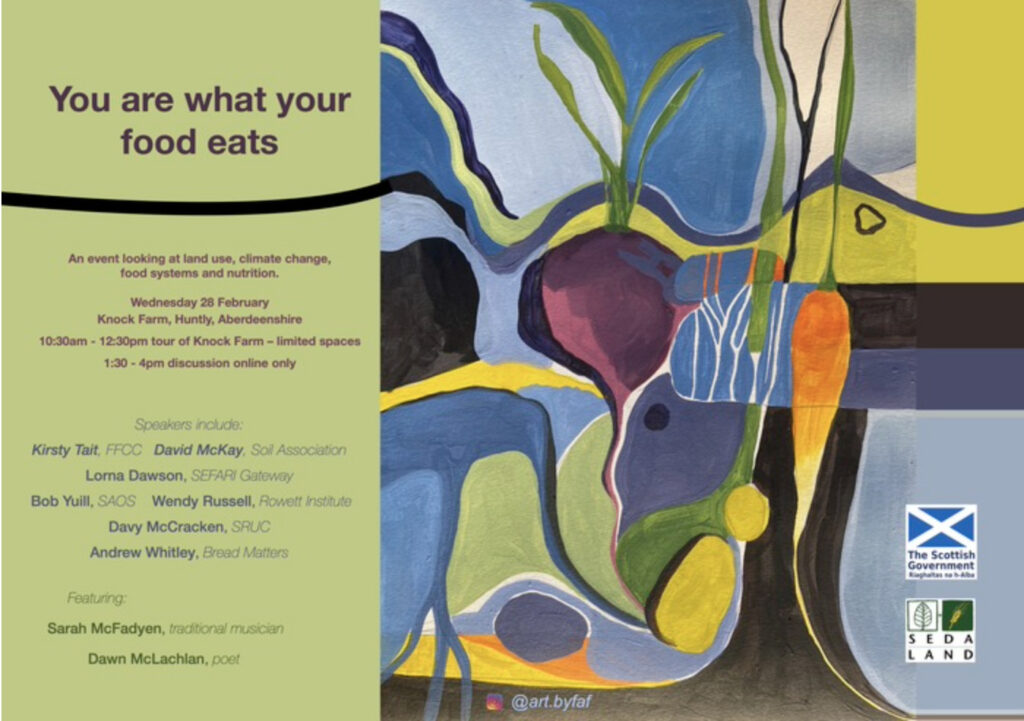
28 February 2024 Online discussion free to all. More at SEDA Land. Join 13.30 to 16.00 at Eventbright.
In “You Are What Your Food Eats”, we aim to investigate the long-term effects of land-use decisions on climate change and the food chain. This is part of a long-term project that SEDA Land is running in and around Huntly. The event forms part of a collaboration between the community, scientists, landowners, farmers, food processors, distributors and retailers.
We will start by looking at the range of food that could provide the nutrition for a healthy diet for the population in Huntly; which crops can be grown locally, by traditional or alternative methods; and how to achieve that.
A roundtable discussion involving all stakeholders in the production and distribution of food will look at how we can add value to Huntly’s food supply chain to achieve resilience and health equity. We will identify obstacles and propose solutions to achieving a fair and just transition to net zero in the rural land-use sector.
Oddfellows parade | Newburgh Fife
On the south side of the Tay estuary, on the last day of each year, the Caledonian Lodge of Oddfellows parades up and down the main street through the small town of Newburgh from 7 to 8 pm. A great occasion for the community who are out in numbers lining the route, following the parade and giving donations for charity.
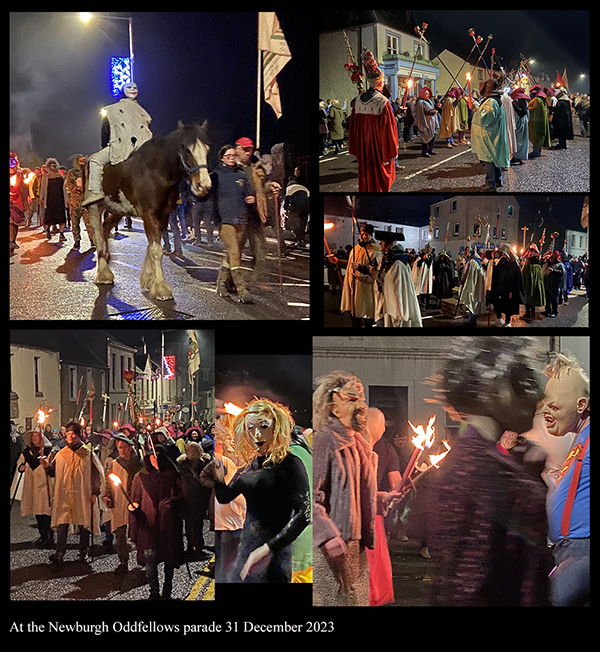
A marching band keeps time, playing ‘Hearts of Oak’ and more jaunty tunes. A section of the parade wears grotesque costumes and masks, sometimes running amok in the crowd and frightening the kids. But it’s all good natured.
More on the Oddfellows in general at Wikipedia. The Newburgh Oddfellows has a Fb page. More background at Calendar Customs, and for a collection of good photographs see Photos by Zoe. This Hogmanay parade is the only one of its type in Scotland. Great tradition!
SEDA LAND ONLINE CONVERSATIONS
Advance notice of a SEDA Land Conversation on 28 February 2024: You are what your food eats involving a tour of Knock Farm Aberdeenshire 1000-1200 then a hybrid Conversation 1330 to 1600 (1.30 – to 4 pm). Update and Links above.
And of the two earlier ones on Carbon Finance … reports to follow …
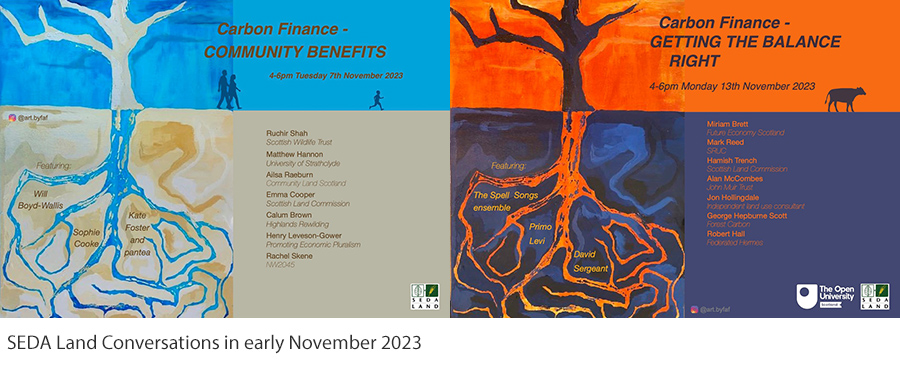
Notice of two online Conversations in the SEDA Land Series 0n Tuesday 7 and Monday 13 November 2023: first Communiy Benefits, then Getting the Balance Right. Information on topics to be discussed and how to join via Eventbright (£2 to 8) at https://www.seda.uk.net/events. Topical but complex. More to follow.
HIGHLAND ARCHAEOLOGY FESTIVAL | NOSAS 25
North of Scotland Archaeology Society (NOSAS) will hold its 25th anniversary events late October and early November 2023. Several events are open to the public. Of interest to Living Field readers may be: Old Mill at Breakachy, west of Beauly (mill ruins, pond and lade, 31 October), Prehistoric rock art at Clava Cairns near Inverness (1 November) and Mulchaich Settlements, Black Isle (Ferintosh whisky, chambered cairn, 3 November). Find out more and book at NOSAS 25.
The Archaeology Festival returns for three weeks from 23 September to 13 October 2023 – Celebrating Highland Archaeology, History and Heritage. There’s over 100 events including walks, workshops, visits and exhibitions. Great opportunities to learn also about historic land use in northern Scotland. See what’s on at the Events Calendar. There’s also year-round self-guided trails and if you have never tried Geocaching, now’s the time.
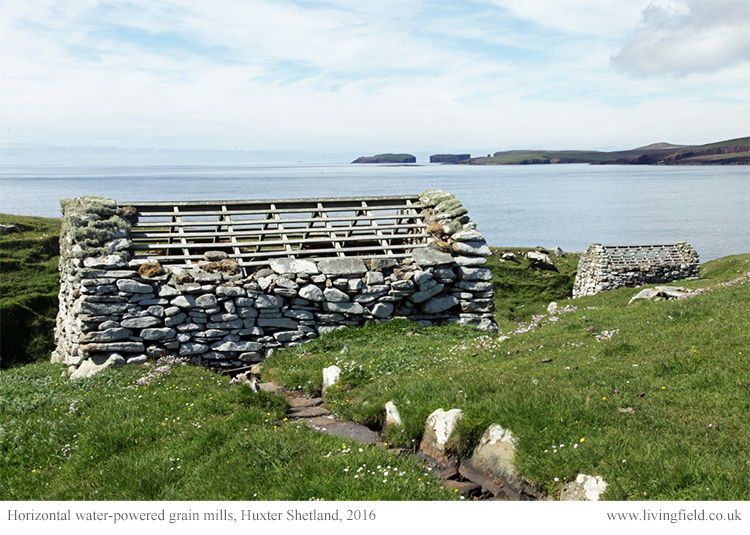
EARTH OVERSHOOT DAY | PLASTIC OVERSHOOT DAY
Earth Overshoot Day is a marker – comparing the natural ecological resources that the earth or a country can generate in a year with the resources used over the same period. The fraction (resources generated over resources used) is multiplied by 365. The two were similar in the early 1970s when Earth Overshoot Day was near the end of December.
Since then, people have used more resources than can be generated – the excess equates to degraded soil, habitat destruction, ecocide and CO2 emissions. The generated/used indicator has gone down to 0.59 in 2023 which gives Earth Overshoot Day as 2 August, day 214 (i.e., 365 x 0.59). Another way of expressing it is that, this year, humans will use the ecological equivalent of 1.7 earths. For origins, methods and examples for your country, see the Earth Overshoot Day web. For a comprehensive explanation of the methodology, see Global Footprint network.
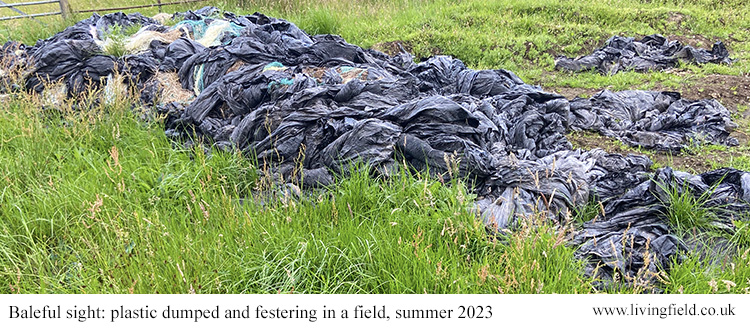
There’s also Plastic Overshoot Day which this year is 28 July. It signifies the huge mass of plastic lost to the environment, not recycled or re-used. The Overshoot Days calculated for the UK are relatively small compared to those of many countries, but there’s still an awful lot of plastic waste here, which goes into waterways or lies in soil and sand where it degrades to microplastic. A legacy!
BIOREGIONING TAYSIDE – Latest
Progress to report on several fronts from Bioregioning Tayside. The report on Feeding Tayside through the Climate Crisis – a meeting on 24 March 2023 is available online at Launch Conference and Future Plans. Recordings of the sessions are available through that link. Next steps under discussion.
The River Ericht Catchment Restoration Initiative – founded by several community-led organisations – has been successful in attracting funding beginning August 2023. Details including map of the catchment, composition of the group and planned activities are on the Bioregioning web at Watershed Management. This is one of two projects funded by Riverwoods Investment Readiness Pioneers.
“The River Ericht: one of the most important spawning grounds for Atlantic salmon in Europe, is in crisis. Extreme weather caused by climate change, historic and current land management practices and invasive species, are damaging the quantity and quality of water in the river and the health of its vegetation, woodlands and wildlife. As a result, salmon numbers are in steep decline and in danger of disappearing altogether.”
SEDA LAND | ONLINE EVENTS | GO FALKLAND | HUNTLY MAPPING
Activities by the SEDA Land community are on the up. We begin with some reports on recent events. A recording of the very successful online conversation Building Futures in Rural Scotland on 18 April 2023 is available at SEDA’s Past events and reports together with notes from the Chat Box. For a summary of the topics discussed, see in Gail Halvorsen’s blog of 12 June. Then Beltane at the Sheiling Project, 28 and 29 April 2023 in Strathfarrar, which brought together young people (ages 15-30) working in rural land use, is covered by Ben Murphy at Fostering Community through Ceilidh’ing.
SEDA Land’s presence at GO Falkland on 1 July 2023 was a great success, as was the event as a whole – see Gail’s account at A Farming Revolution on the SEDA land web. SEDA hosted the Bio-Caledonia presentations and discussion on Scotland’s strategy for biodiversity and talked to many visitors at the display in the communal marquee.
The Huntly Mapping project – Mapping Land Use, climate change and food – is starting to roll: see the poster (below right). A description of the proposed work and a request for involvement from the local community is being circulated by SEDA Land and is now available on the Living Field web.
And finally (for now) here is advance notice of an Online Conversation to be held 9 October 2023 – Number 2 in the series Building Futures in Rural Scotland on the topic of “Can Local Government Lead? Flyer below left, info and booking at SEDA Land current events. And just out, notice of another Conversation in the Building Futures series, this one titles “How to help communities” on 30 October, more to follow.
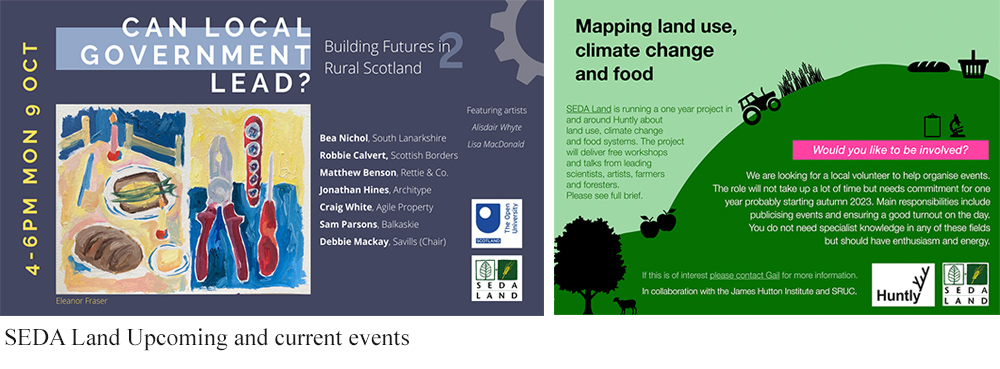
ARCHAEOLOGY | NOSAS | MULCHAICH | BLACK ISLE | BERE
On one of Andrew Wights journeys (1778-1784), he linked the neglect of the agriculture around Ferintosh on the Black Isle to the local preoccupation with distilling barley or its landrace bere. In recent years, NOSAS (North of Scotland Archaeological Society) has been excavating a site at Mulchaich, near Ferintosh, including the kilns that were probably used for drying malt (germinated bere seed). The site is now open to visitors. Information on the excavation, links to related sources and a leaflet for visitors can all be read and downloaded from the NOSAS web at Visit the site of an 18th century distillery.
Notes on Wright’s journey on the Black Isle are on the Living Field web at Great quantities of Aquavitae. Bere was grown at the Living Field garden for many years: see Garden | Cereals, Bere barley at the Living Field, and for links to all bere articles on this site – the Bere line. (Posted 22/07/2023)
ARTWORKS | DUNDEE SLESSOR GARDENS | AURORA AUSTRALIS
The book was Aurora Australis, made in the Antarctic in 1908 by the crew of the Nimrod during their 1907-09 expedition to Antarctica led by Shackleton. Some of the pages are displayed online by the Dundee Heritage Trust (DHT). Now a public art installation of the same name is on display on the hoardings around a building plot next to Slessor Gardens in Dundee Waterfront. Two of the prints are shown here – see the full set at Sharing Not Hoarding. The artworks originated from Art Night’s InWith programme and were created by DHT’s Creative Communities Network.
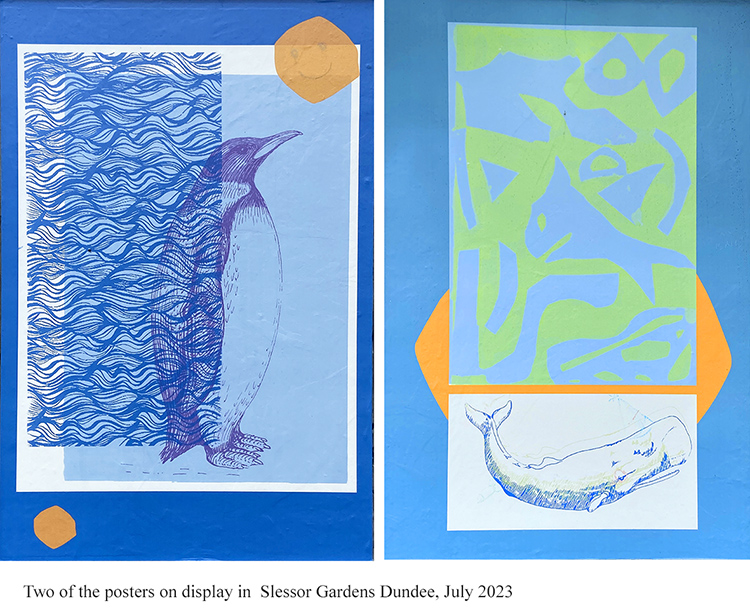
More at Creative Dundee and Art Night. Was great to see all these prints, outdoors and for free.
BIOSPHERE RENEWED AND EXTENDED
The area of Galloway and South Ayrshire designated as a UNESCO Biosphere for the past 10 years has been renewed for a further 10 and had its area extended following reassessment (4 July 2023). UNESCO – United Nations Educational, Scientific and Cultural Organisation – Biospheres contain areas of outstanding landscapes and wildlife but do not exclude people. Living and working alongside nature are integral to the concept of a Biosphere. Each of the 740+ biospheres in the world share the same aims in Conservation, Learning, Sustainable Development and Climate resilience.
The achievements of Galloway and South Ayrshire are listed in this News page on their web site and include a Biosphere Certification Mark for local businesses, a Learning for Sustainability Toolkit and the Blackface Wool Project.
UNESCO states that its Biospheres ‘promote solutions reconciling the conservation of biodiversity with its sustainable use’ and are ‘sites for testing interdisciplinary approaches to understanding and managing changes and interactions between social and ecological systems, including conflict prevention ….’
SEDA LAND EVENT – BIO-CALEDONIA at GO FALKLAND
The next SEDA Land Conversation will be held at GO Falkland in Fife on 1 July 2023. The panel will present and discuss an effective long-term strategy for halting and reversing declines in farmland biodiversity.
GO Falkland is an all-day event on regenerative and sustainable agriculture and food production to be held at the Falkland Estate on 1 July 2023. Links: Bio-Caledonia and GO Falkland. More to follow ….
KAFFE FACETTE at DOVECOT STUDIOS EDINBURGH
Dovecot Studios, Edinburgh is hosting an exhibition Kaffe Facette The Power of Pattern from 31 March to 8 July 2023. Kaffe Facette is renown in textile design, pattern, colour and craftwork. Many have learnt from his methods and created their own style. This exhibition brings together a range of quilts – or to the unskilled and uninitiated (like the ed.) bits of coloured fabric sown together. Quilting on this scale is high art, high craft, a level of intricacy that’s hard to fathom. Here’s one of them – based on Durer’s rhinoceros.
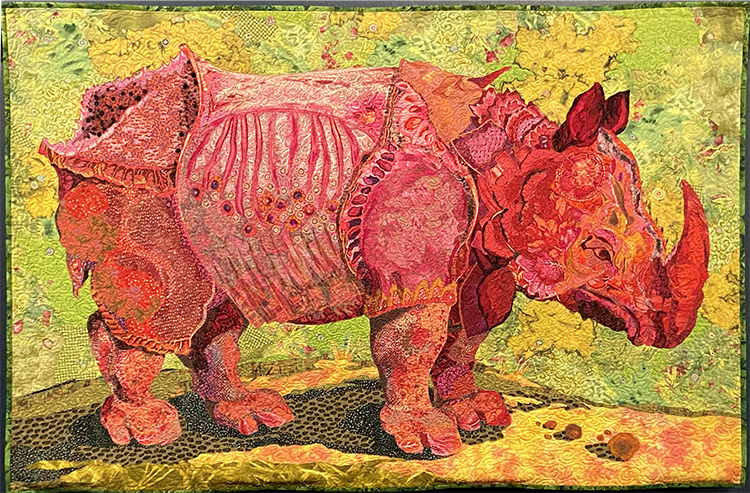
It’s called Tickled Pink, made 2005, by Susan Carlson who lives in Maine USA. Like many of the quilts on display, this one has a message. The artist writes: “… these rhinos are having a hard time in our world. They are losing habitat and are being killed for their body parts, especially their horns”. She hopes the artwork will help to raise awareness of their plight.
Information and links: Dovecot Studios general info and the Power of Pattern exhibition; web page Kaffe Facette. To see a copy of one of Durer’s originals: The Library of Innerpeffray.
CELTIC ART CONFERENCE
Ruth Black – celtic artist, weaver, feltmaker (among her many talents) – is taking part in the 2nd International Day of Celtic Art Conference at Downpatrick, Northern Ireland, June 8-10 2023. Ruth described, in a Living Field article, how she creates artwork using natural fibres, mainly wool – Ancient and Modern – techniques with wool in textile art.
LESLEY HARRISON | BOOK OF POEMS | KITCHEN MUSIC
Lesley Harrison, writer and poet, based on the Angus coast has a new book of poetry titled Kitchen Music, published by Carcanet in the UK and New Directions in New York, US.
John Glenday writes: “Lesley Harrison is a writer of consistent brilliance, who with just a handful of words can conjure song from silence. These are warnings, elegies and celebrations… Kitchen Music is a meticulously crafted Northern Hymnal – a brilliantly conceived orison to the flora and fauna of the higher latitudes. This collection is essential reading for anyone keen to understand why poetry remains a unique force for change on this planet.’
Kitchen Music will be launched online at 19:00 Wednesday 31 May by Carcanet – register here for £2. ‘The event will feature readings and discussion, and audience members will have the opportunity to ask their own questions. We will show the text during readings so that you can read along.’
Lesley’s contributions to the Living Field web can be seen at Poems, projects, writing. More to follow after the launch.
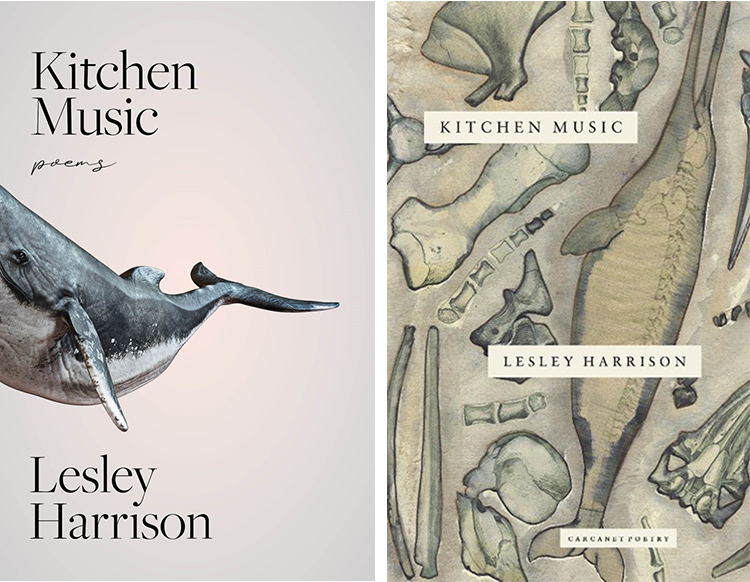
NEW EXHIBITION BY TINA SCOPA 17-30 APRIL 2023
Tina Scopa has worked with the Living Field and at Hutton open days in the past, basing her art and materials on plant and soil. She now has a new exhibition in St Andrews, 17-30 April, Upstairs at J & G Innes, 107 South St. See more on Tina’s work at her Living Field pages: Tina Scopa and Edaphic Plant Art.
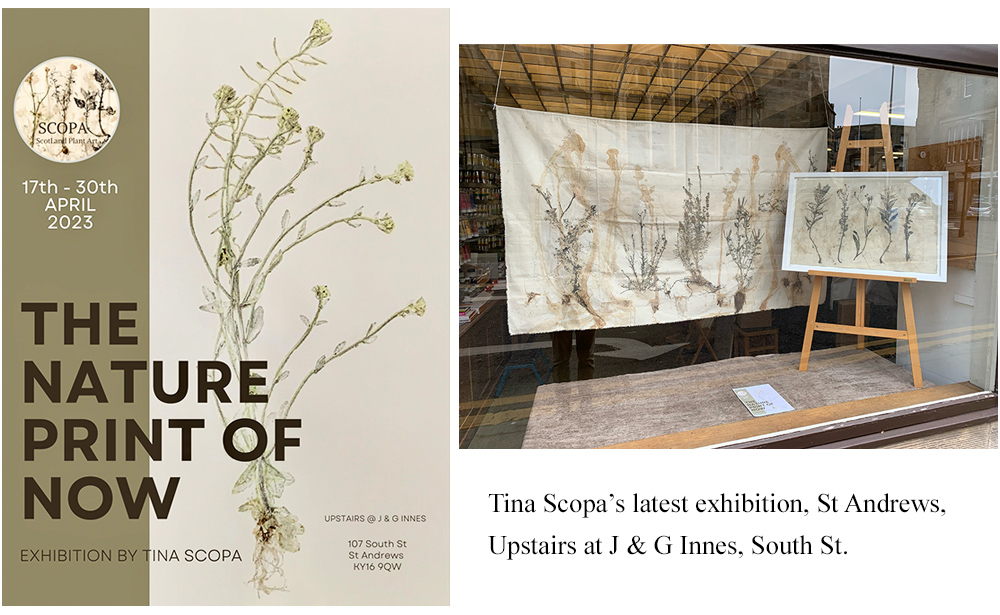
BELTANE @ THE SHIELING PROJECT
29-30 April 2023, a unique one and a half day event on land use, wellbeing and biodiversity at Dunmaglass, near Struy, Strathfarrar. More on the event at the SEDA web, tickets via Eventbrite
“We are holding this event to enable young people working in sustainability, land use and other rural jobs to make connections and to foster opportunities for collaboration. The event is also a chance to discuss some of the issues and barriers to living and working rurally today, including depopulation, isolation and limited employment opportunities.”
“The event aims to bring together young people working in land use and sustainability, the local community and sector stakeholders to learn, make connections and explore solutions that integrate traditional knowledge and new thinking. Web site for the Shieling Project.
SEDA LAND CONVERSATION – BUILDING FUTURES IN RURAL SCOTLAND
18 April 2023, 4 – 6 pm, online. Latest in the series of highly successful online Land Conversations held by the Scottish Ecological Design Association. Info at SEDA Land Building Futures in Rural Scotland. Tickets at Eventbrite.
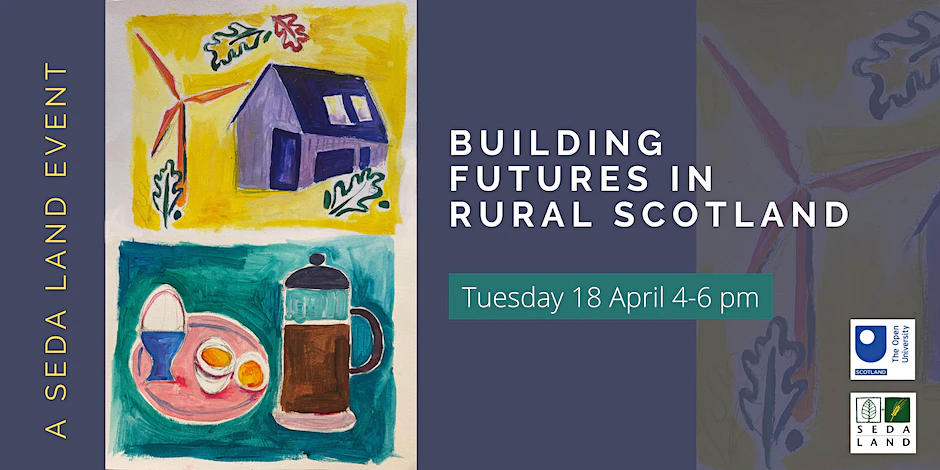
“Join our inspiring panel to discuss how we might build more sustainable rural communities and encourage the repopulation of the Scottish countryside.”
“We will discuss how to build more sustainable rural communities and encourage the repopulation of the Scottish countryside. While some large landowners are prioritising rewilding, this event will focus on those who lean more towards reviving communities.”
BIOREGIONING TAYSIDE
“Bioregioning Tayside is a new platform which is bringing people in Tayside together to build community resilience in the face of …. climate warming ….. mass extinction ….. and a broken economic model.” Find out about it here.
Bioregioning Tayside is organising a meeting Feeding Tayside through the Climate Crisis to be held at Discovery Point, Dundee on Friday 24 March 2023. Read about it on the Scottish Rural Network web. More to follow with the Living Field editor’s blog on the event.
“Bioregioning reframes the way we see the places where we live and work, helping us reconnect to and restore the ecological systems of which we are a part and upon which we all depend.”
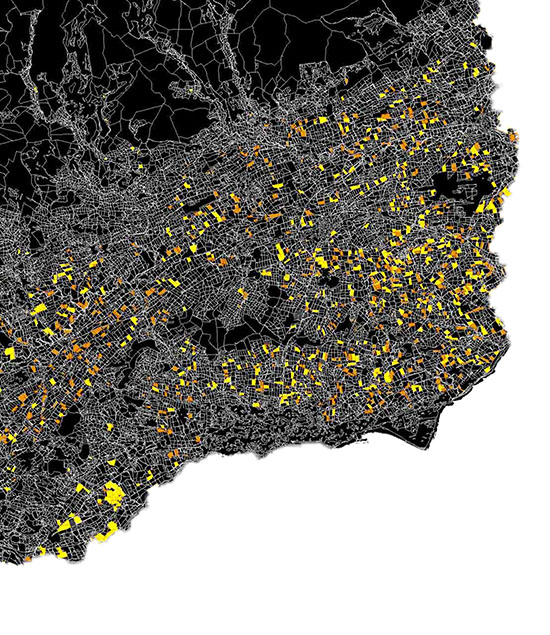
Ed: a great day at the Bioregioning Tayside meeting, many interests expressed, diverse views considered. Waiting for the report on the day and then …. more on the Living Field web.
WESTER ROSS BIOSPHERE | CULTIVATE PROJECT
The Wester Ross Biosphere continues to integrate its unique biophysical character with its people and cultural heritage. The CULTIVATE Project – Co-creating cultural heritage and narratives for sustainable rural landscapes – is a partnership between Biosphere regions in Scotland. Czech Republic, Estonia and Norway and is led by the University of the Highlands and Islands. Find out more here.
Gairloch Museum – among its varied activities – will be holding a Winter Talk on 28 March 2023 on ‘Exploring sustainable rural; landscapes through cultural heritage objects in Wester Ross Biosphere” – an evening facilitated by researchers from the University of the Highlands and Islands working on the CULTIVATE Project.
Wester Ross is one of seven UNESCO Biospheres in the UK. UNESCO’s Man and the Biosphere programme has led globally on placing equal importance on the natural history of a region and its people.
GEFRIN | YEAVERING
Ad Gefrin – By the Hill of the Goats – was the place of the Northumbrian kings in the 600s. Known more commonly as Yeavering today (same root), the site was excavated first in the 1960s. In March this year a stunning new museum with distillery attached, opened in Wooler to tell Ad Gefrin’ story. The museum and archaeological site are set within an extensive landscape that has been farmed since at least the Bronze Age. [More to follow …]
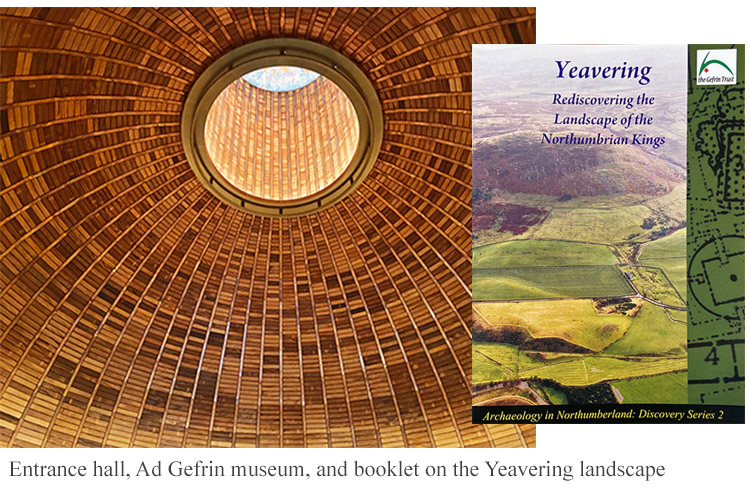
PLANT ATLAS 2020
The Botanical Society of Britain and Ireland launched the new Plant Atlas on 9 March 2023. What an achievement – 30 million records of 3495 species collected in field survey over 20 years followed by 3 years of analysis. The data can be accessed online for free. The Atlas documents the massive changes in plant species over the past few decades: decrease in 53% of of native species, increase in 58% of recent introductions.
Hard copies of the books can be bought at plantatlas2020.org. More to follow on the Living Field.
REAL BREAD FESTIVAL ST MONANS FIFE
The first Scottish bread Festival will be held at the Bowhouse, St Monans Fife on 23 February 2023, 10.00 am to 4.00 pm. It’s run jointly by The Read Bread Campaign and Scotland the Bread.
Scotland grows very little of its own bread-making wheat … and who these days makes flatbreads from oatmeal, beremeal and peasmeal? . The event hosts a range of stalls, cafes, exhibits, talks, films and things to do for children. Here’s the Programme. It’s the first – not to be missed!
COUNTRYSIDE VISITORS – WHO PAYS?
The next SEDA Land Conversation – 13 February 2023 online, book through eventbright, see below.
This event will explore how Scotland could direct more of the revenue raised from visitors to the countryside towards rural communities. The revenue would help improve facilities both for those living there and for the visitors themselves.
This event will be in the format of SEDA Land’s popular two-hour “Conversations”. As always, the events will be led by the science, but inspired by artists and practitioners who are already experimenting with these ideas. Full details of the event here and tickets at eventbright here.
BATTLE OF THE BRAES, SKYE – ONLINE EXHIBITION
The UN Biodiversity Conference in December 2022 (below) raised awareness of the rights of indigenous peoples and the protection they should get to stop the erosion of their land, culture, income and way for life. It’s been a hard road for most indigenous societies, and oppression continues – activists murdered to gain land for beef and soy, and ancient sacred sites knowingly destroyed by international mining interests.
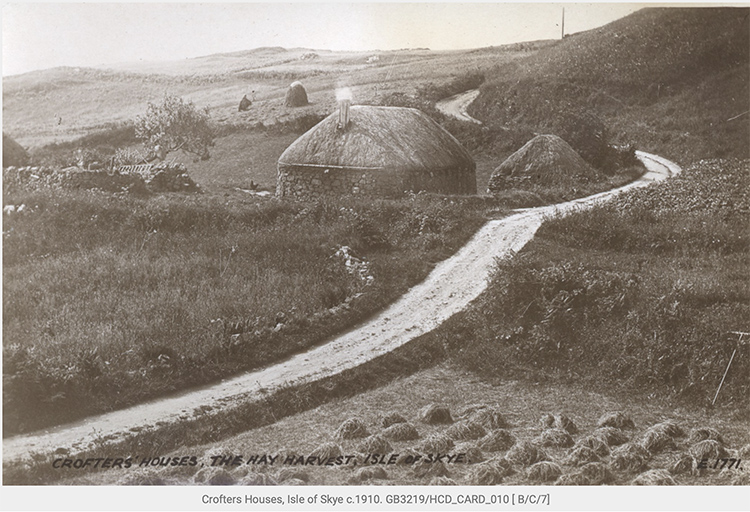
The clearances in Scotland had similar cause – land taken for agricultural ‘improvement’; and similar effects – people uprooted, livelihood lost, culture lost. But one community resisted the landed elites. It led to an insurrection known as the Battle of the Braes in Skye on 19 April 1882. An exhibition on the battle was held in 2022 at the Skye and Lochalsh Archive Centre and continues now online at the Highlife Highland web. Perhaps begin with the Introduction then move to the. Exhibition pages. More on the battle at Sabal Mor Ostaig.
UN BIODIVERSITY CONFERENCE – COP 15 – 7-19 DECEMBER 2022
The global Biodiversity Conference, known as COP15, was originally destined for Kunming, China but was moved to Montreal, Canada.
195 countries were represented and a final agreement was reached. There is a lot to read. To get a feel for the achievement, try Inger Anderson’s closing speech A milestone for nature: from Kunming to Montreal. Then the UN Environment Programme gives a summary and links to many of the reports on the nature crisis issued over the past year or two, for example the IPBES report of 2019, cover below right. (COP is short for Conference of Parties to the UN Convention on Biological Diversity,)
The web site of the Convention on Biological Diversity gives a summary of the Four Goals and 23 Targets agreed at the COP (the full text also available as a PDF to download). The Editor interprets the four goals as: a) Natural ecosystems conserved and repaired, extinctions reduced; b) Biodiversity valued and sustainably used for human needs; c) Knowledge (technological and indigenous) shared equitably; d) International finance made available to implement the Goals and Targets. The paragraphs on the Targets are quite dense, the main points carefully qualified, hard to get at the meaning. We’ll be looking at Goals and Targets in more detail over the coming weeks.
The outcome has been called historic, a global deal for nature …. but nature’s in severe decline. It’ll take more than words.
FORTY FARMS EXHIBITION AT RHEGED CUMBRIA
Until 4 January 2023, the exhibition space at Rheged near Penrith, not far off the M6 motorway host this photographic display by Amy Bateman. It’s an excellent set of images relating to her conversations with the 40 farms of the title. Open daily 0900-1730, free entry.
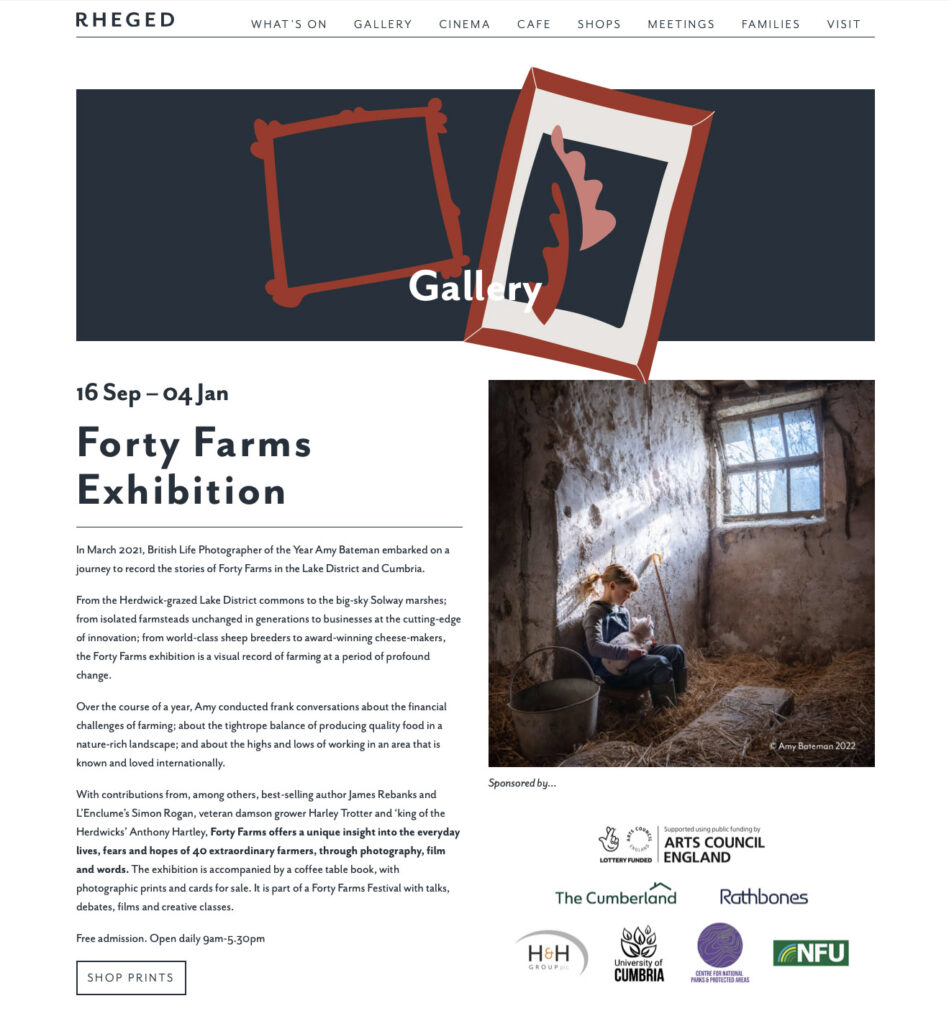
“From the Herdwick-grazed Lake District commons to the big-sky Solway marshes; from isolated farmsteads unchanged in generations to businesses at the cutting-edge of innovation; from world-class sheep breeders to award-winning cheese-makers, the Forty Farms exhibition is a visual record of farming at a period of profound change.”
There’s more about the project at Amy Bateman Photography where the Forty Farms Book and prints can be bought.
VOLUNTEER FOR SEDA LAND
SEDA Land (SEDA = Scottish Ecological Design Association) is looking for volunteers to help with social media, web site and events. Contact them via the email on the poster below.

There’s more on SEDA Land on the Living Field web at SEDA Land Conversations 2021. To find out about their aims and activities, visit the SEDA Land web pages.
GLOBAL CLIMATE
World Met Organisation report, 26 October 2022: More bad news for the planet: greenhouse gas levels hit new highs.
United Nations Further warnings of global warming and climate change from the United Nations (emissions reduction too slow, poorest people suffering more) see UN Secretary General’s message of 3 November. For further information: UNEP Emissions Gap 2022 and UNEP Adaptation Gap 2022.
COP 27 begins 7 November 2022. But what will it achieve given the worsening state of the world shown by the WMO and UNEP reports above. (Ed: beware or rapidly shifting, distracting banners on the web site).
STRING LINES
String / Lines – unraveling the story of string: people, plants, place. An exhibition by Caroline Dear from 2 November 2022 to 1 February 2023 at the Skye and Lochalsh Archive Centre, Portree.
Culmination of a year-long project which explored string making for over 50,000 years.
Talks at Highland Archaeology Festival – String: the first 50,000 years (2021) and Plants, thread and textiles – archaeological perspective (2022).
SER EUROPE – OPPS FOR STUDENTS AND YOUNG PROFESSIONALS
The Society for Ecological Restoration Europe continues its successful drive to recruit more people to its ranks. The emphasis at present is on attracting students and those who might be wondering about career opportunities in ecological study and restoration. SER Europe has produced career guides and hosts an online portal to encourage young people to get involved.

To find out more, visit the SER website at YOUNG#ER Initiative. A Living Field page gives further background and relevant links – Ecological Restoration? Get involved with SER Europe.
SEDA – IMAGINING BIOPRODUCTS | REIMAGINING FOOD
Recordings of the two online Conversations held earlier this year in June 2022 are now available on the SEDA Land web pages at SEDA-Bioproducts where there are also links to a range of innovative companies.
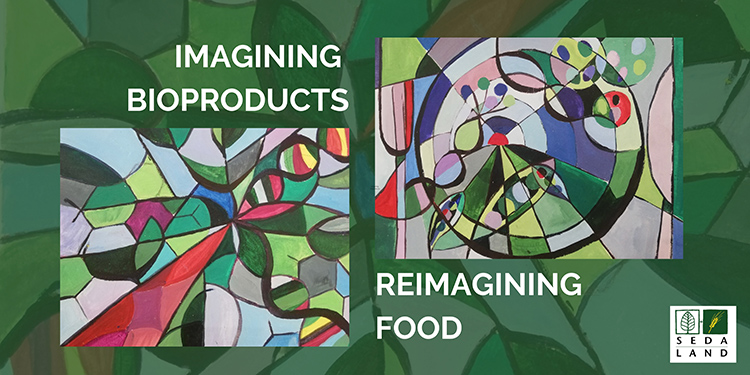
The country is in transition: at least half its food and most of its wood is imported, much of it from places where agriculture and forestry are degrading the local environment; its natural capital in soil, stored carbon, and water is degrading and losing function; and waste is rife. Yet many people, small enterprises and some arms of government are committed to change: producing food from local resources; reducing use of non-renewables; cutting waste; devising new products from plants, fungi …. and …. insects. The small innovators are up against rigid, dominant and mostly international supply chains. Who will prevail. The debate in these two Conversations will run.
OPEN FARM SUNDAY 2022 FEEDBACK
LEAF Open Farm Sunday returned in full on 12 June this year. The Living Field at the James Hutton Institute did not take part – see LEAF Open Farm Sundays again. But it looks to have been a great day at many farms throughout the country.
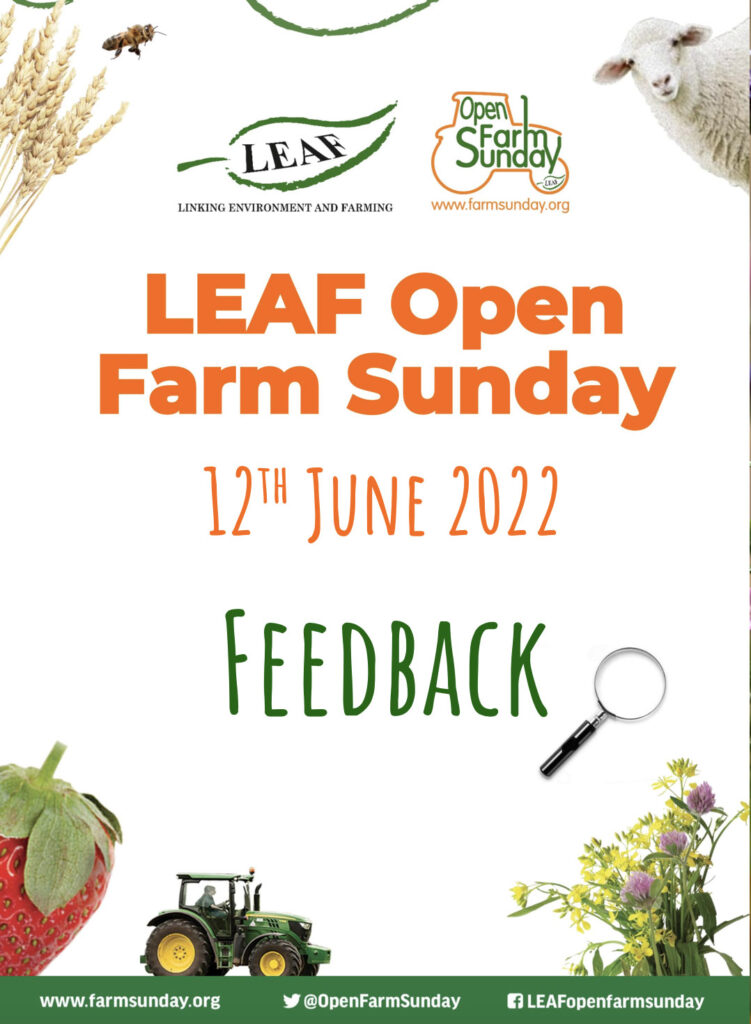
LEAF reports masses of positive feedback. and has collated it all into an online scrapbook of comments, memories and anecdotes (and lots of photos). You can see all of the 22 pages at LOFS22 Feedback Scrapbook.
Save the date for next year – LEAF Open Farm Sunday is on 11 June 2023. Check the LOFS web site at Open My Farm if you want to get involved.
FOOD MUSEUM – EAST ANGLIA
The Museum of East Anglian Life changed its name this year 2022 – rebranded itself to become The Food Museum: “We are the UK’s Food Museum, located in East Anglia, ‘Britain’s Breadbasket’. Our mission is to connect people with where our food comes from and the impact of our choices: past present and future.” Web site: https://foodmuseum.org.uk/
If you can’t make it to East Anglia, the web site is full of images, posts and reading lists.. There’s also a digital collection. On the latter, a search for ‘Jethro’ led to a short note by a volunteer researcher on the origin of seed drills: Babylon had the technology in 1400 BC, then China in the 2nd century BC, and later Italy. In England, Tull (1674-1741) produced the modern seed drill in 1701. The East Anglian Smythe brothers (James lived 1775-1843) manufactured an improved design and by the end of the 1800s ‘exported seed drills all over Europe, Russia and the African continent’.
Ed. Sounds like a timely move to the Food Museum – it’s crucial for people to know where their food comes from. Farming and food have been too often disconnected (6 June 22)
OPEN FARM SUNDAY 2022
LEAF’s Open Farm Sunday is on 12 June this year. The Living Field and its surrounds at Hutton Dundee has hosted many great Open Farm Sunday’s in previous years when we’ve shown how science and farming can work together to help solve some of the world’s most urgent problems.
We’ll miss it this year but you can find an open farm in your area at https://farmsunday.org/visit-a-farm. Among many interesting themes is plant your pants (100% cotton of course) to show how good your soil is at decomposing organic matter.
Some farms and farming organisations are hosting events around but not exactly on 12 June. One of the biggest in Scotland is Countryside Live run by the Royal Northern Agricultural Society, this year on 29 May (general public) and 30 May (secondary schools) near Rothienorman, Aberdeenshire. Looks like a great and varied programme..
NEW SEDA LAND CONVERSATIONS ON THE BIOECONOMY
Two new SEDA Land Conversations are planned around the topic of the Scottish Bioeconomy in June this year. The first – Imagining Bioproducts – is to be held on 13 June 2022 at 2 pm, Online and Live at Huntly, Aberdeenshire. The aim is to review the range of current and future bioproducts from plants, animals and microbes and consider how they can be used to stimulate local economies and reduce dependence on fossil fuels.
Details and where to get online tickets at the SEDA web site: Imagining Bioproducts.
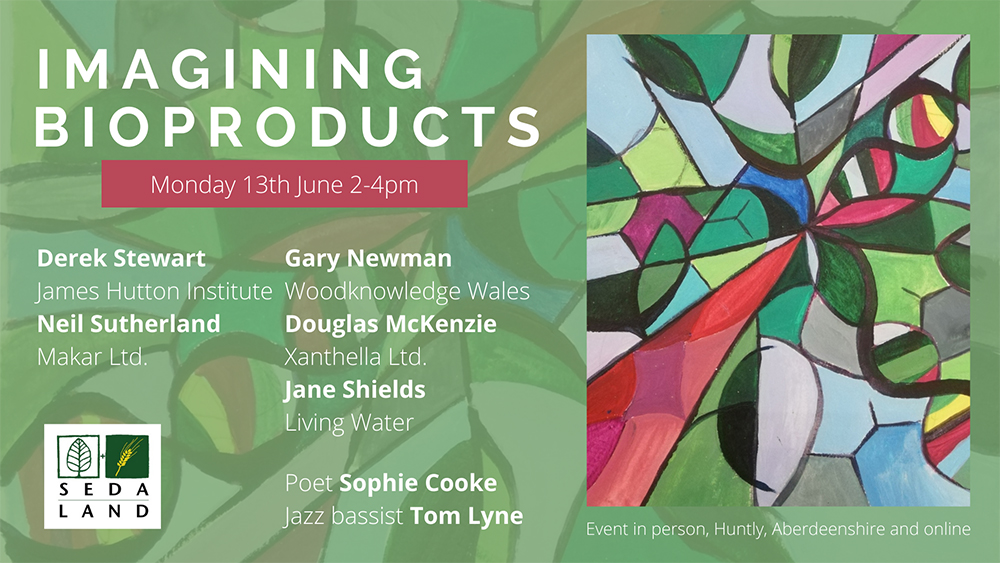
SCOTLAND THE BREAD CROWDFUNDING CAMPAIGN
Scotland the Bread and its various projects are gaining increasing recognition outwith Scotland. Here’s the latest: “We are delighted that Flour to the People won the Food Innovation category of the BBC Radio 4 Food & Farming Awards 2021! Judge Dan Saladino came to Fife to learn more about the project and hear about the impact it has had on communities involved”.
Links to the award ceremony and related videos can be accessed through the Flour to the People web page. There are various ways to offer support through becoming a shareholder or donating. The Crowdfunder that started last year is continuing in 2022. More information and how to contribute at Get involved.
DEMAND FOR STRONG EU NATURE RESTORATION LAW
The Society for Ecological Restoration (Europe) published on 10 December 2021 a call, or declaration, to the EU for a strong law on ecological restoration. Summary, short video and download of the full declaration at https://chapter.ser.org/europe/declaration-on-eu-restoration-law/.
Background “… the European Commission is working on a new nature restoration law, with legally binding targets, as part of the Biodiversity Strategy for 2030 and the European Green Deal. With this framework, Europe can lead the world by example and contribute to the success of the UN Decade on Ecosystem Restoration and the UN Sustainable Development Goals.”
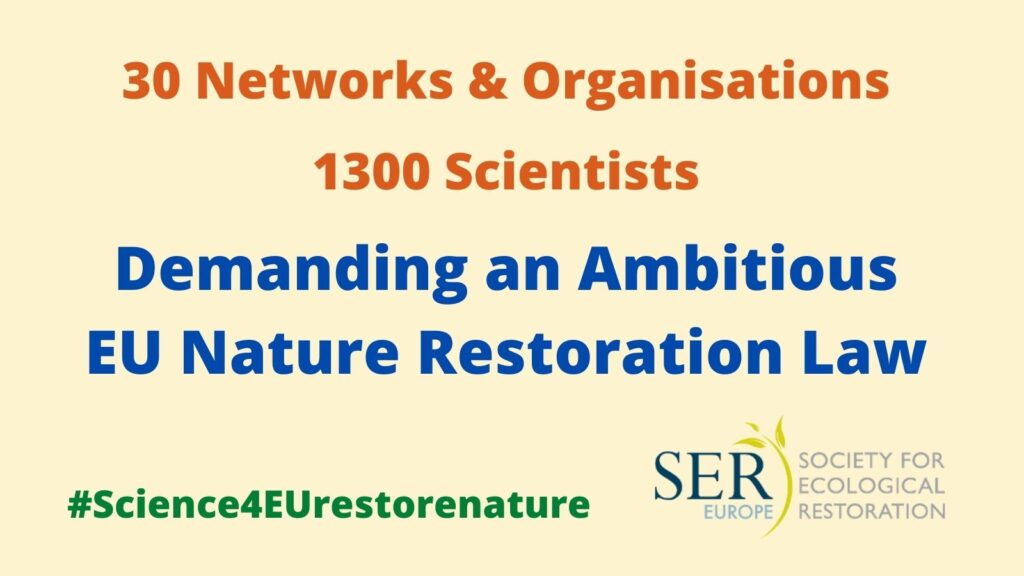
Individual scientists can add their name to the declaration at the link above. More on this from the Living Field …. links to be added.
SEDA LAND – NEW ONLINE CONVERSATION ON CARBON TAX
A new organisation – SEDA Land – was formed recently following the successful 6 online Land Conversations organised by the Scottish Ecological Design Association earlier in 2021. SEDA Land is a “cross-sectoral forum for the discussion, formulation and promotion of ideas that will improve land use in Scotland to achieve both a healthy ecology and dynamic social economy.” The first event to be held by SEDA Land will be a collaboration with the John Muir Trust in an online ‘conversation’ on a carbon tax for land usage. Save the date!

The Living Field is pleased to note that our experience in climate, crops, environment and agroecology is now contributing to SEDA Land.
UN DECADE OF ECOSYSTEM RESTORATION 2021-2030
Join #GenerationRestoration – World Environment Day ( 5 June) 2021 saw launch of the Decade of Ecosystem Restoration. For recent publication of 10 guiding principles, see DIARY21 item for 8 September. Living Field article to follow.
HIGHLAND ARCHAEOLOGY FESTIVAL 2021
‘The festival is provided by the Highland Council and runs over 3 weeks between 25 September and 15 October to celebrate the heritage of the Highlands from earliest settlers to modern times, below ground and above. Whether you are a seasoned archaeologist or a complete beginner, the festival will let you explore an amazing range of places and collections. There’s something to suit everyone and many of the events are free!’ Details at the HAF web site. [Ed: much here to suit Living Field interests – history of natural products and the people who used them ….. events all over the region.]
PLANTLIFE’S ONLINE TALKS AND EVENTS – OCTOBER 21
Plantlife will be holding a series of online talks and meetings from 1 to 29 October. Topics include meadows, dunes, temperate rainforest, international conservation, watercolouring, palaeoecology and identifying grasses. Programme at Fall into Nature with Plantlife.
INNERPEFFRAY FESTIVAL OF READING
From September 8 to 11, Wednesday to Saturday: ‘For four days, the historic site by the river will be alive with words in every format, from comic-strip to literary classics, poetry, prose and a pop-up cafe!”
This – the first – Festival of Reading is commemorating the 250th anniversary of the birth of Walter Scott ‘the father of historical fiction’. There will be talks, exhibitions, workshops and family activities. The Innerpeffray web site gives the full programme. Great location!
BEER AND BERRIES FESTIVAL – HOSPITALFIELD ARBROATH
Saturday 21 August 2021 – Hospitalfield will host this year’s Beer and Berries Festival. The day includes the stalls and events showcasing the region’s Beer and Berries and and a series of talks and workshops on the topic of From Monks to Medicine to which the Living Field will be contributing. Should be a great day. Booking essential at Tickets: Beer & Berries 21.
Living Field articles on the event: Medicinals through the Ages I.
PERMACULTURE FUNDRAISER FOR CHILDREN
Chris Warburton Brown from the Permaculture Association UK writes:
” Will you help us to empower children to thrive in uncertain times … we are launching a fundraising campaign for a project that will help build a love of nature, resilience, empathy, emotional intelligence and generosity of spirit. It will connect children with nature, themselves and each other by providing them with inspirational outdoor activities.
52 Actions with Children will produce 52 action cards such as Cook on a Campfire, Explore Soil and Walk to School. Each one will create opportunities to learn together through fun, shared activities, while promoting mental and physical health. All the actions will require minimal resources, skills and preparation. We want to create inspiring activities that children and their carers can do together without educator support.”
Permaculture Association web site: https://www.permaculture.org.uk/. To find out more about this campaign and to donate to help the cause, visit 52 Actions with Children. [Ed. The campaign has now raised the funding for the first stage – congratulations!]
ARBROATH2020+1 FESTIVAL
Arbroath 2020+1 runs from July to September 2021. For the programme, click to arbroathfestival.com. Two events are of special interest to the Living Field. First, on 8 August 12 noon Whale Song combines poetry by Lesley Harrison and music by Katherine Wren and Alex South. (Examples of Lesley’s work can be read at her Living Field page.) Second, between 9-19 September (outdoors on the sand dunes) Over Lunan by Aproxima Arts is a ‘monumental sound and visual installation’ ‘linking the cradle of civilisation (Mesopotamia) with Scotland’s Lunan Bay’.
EXHIBITION – EMMA TALBOT’S GHOST CALLS AT DCA DUNDEE
From 28 April to 8 August 2021, Ghost Calls is open at Dundee Contemporary Arts. Exhibition notes, downloads and video at the DCA web site. Free to visit but booking essential. More from the Living Field at Ghost Calls.
DIARY21
Beginning 1 June this year, the Living Field is keeping a diary of events and announcements in topics of climate, particularly in relation to land, natural resources, agriculture, food, pollution, land degradation and land restoration.
To place climatic events in context, the diary will run alongside the Living Field’s series of short articles on Climate, specially the section on Trends and Events. Natural cataclysms, war and failure in governance, even in the distant past, tend to have long-lasting effects, many of which continue to influence land use, agriculture and food security today.
LEAF UPDATE
Linking Environment and Farming (LEAF) has been active online over the past year or more. This year is 30 years since its beginning. What a change it has made!
It’s good to have been kept up to date through LEAF’s Online ‘Surgeries’ where speakers and audience dissect a topic of current interest. Very relevant to agroeological research at the Institute was the one on AgriCaptureCO2, a EU-funded project which aims to help farming increase or restore the organic carbon content of soils, which has declined in many regions. LEAF contributes through its knowledge of regenerative agriculture, and more specifically at one its demonstration farms. More on the project at AgriCapture web site.
And earlier this year, we heard about one of LEAF’s Resilient and Ready initiatives LEAF and Corteva team up to nurture emerging leaders in sustainable farming. Four farms, two in Aberdeenshire, each working towards sustainable use of land and resources.
LEAF Open Farm Sunday (LOFS) continues this year at a later date, 27 June. You can check which farms are open near you at the LOFS website. Sadly, the Living Field garden will not be hosting its usual LOFS activities this year.
Some more to read: LEAF Global Impacts Report 2021
ECOLOGICAL DESIGN – LAND CONVERSATIONS
The Scottish Ecological Design Association (SEDA), in conjunction with the James Hutton Institute, will be holding a series of online Land Conversations on the future of all types of land use in Scotland.
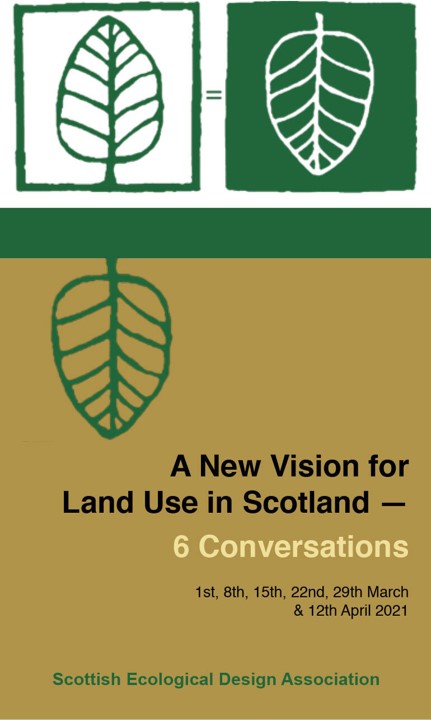
The six conversations, to be held in Spring 2021, from 1 March to 12 April, will each feature several speakers and a panel of experts who will debate main issues such as food security, carbon capture, rural-urban interdependence and arguments around wild land and rewilding.
The SEDA web site gives the details at A New Vision for Land Use in Scotland. The Living Field will be publishing a fuller article on the Conversations in the next week or so. A report on the Conversations is due out in June. For contributions from the Ed., see Land Conversations 2021 and Land Conversations matrix. More to follow …
SEED WEEK 2021
The Gaia Foundation will be holding its fourth Seed Week 18-22 January 2021. The aim is to ‘raise awareness of local, open pollinated, agroecological seed being grown and sold in the Uk and Ireland’. Regional coordination in managed by Seed Sovereignty UK and Ireland Programme. News and updates can be found at their news-blog and for social media users – #SeedWeek. For more information: sinead@gaianet.org. Read more at the Living Field page Common Grains | Seed Sovereignty.
CLIMATE AND SUSTAINABLE FOOD PRODUCTION
Following the note below on the Living Field’s future, we begin this week of the winter solstice 2020 a new section under the heading CLIMATE dealing with Climate and Sustainable Food Production. Content will include:
- past climate and weather – the effect of climatic shifts and unusual weather on crop and grass production, including recent ‘extremes’ such as the 2012 wet year;
- the importance of climate and weather compared to other external and local forcers, including cataclysmic events such as volcanic eruption, and political decision leading to (for example) uncontrolled imports;
- the biological effects of weather-variables (such as solar radiation, temperature, wet soil and dry air) on crops and grass;
- the present position – environmental, economic, cultural and political – and its ability to resist extremes;
- what needs to be done to make the food production system resilient to whatever might come.
Enquiries to geoff.squire@hutton.ac.uk (21 Dec 2020)
LIVING FIELD FUTURE – NOTE FROM THE EDITOR
The pandemic has brought the Living Field to a standstill. The Garden has been untended apart from some general maintenance. There have been no new plants or exhibits in 2020. The web site – you might think – would continue with its various articles and news. But no … we realised now that the web site was tightly linked to activities in the Garden and around open events. So there’s been little new material added to this site for months.
The matter of the Living Field web site therefore needs to be resolved. One option was to close it and bid farewell. But we have decided to keep it open for the duration of 2021 with the particular aim of presenting a series of articles on climate, leading up to COP26 to be held in Glasgow in November 2021. Click for the COP26 web site.
MORE HOME ACTIVITIES FROM ARCH
Susan Kruse from Archaeology for Communities in the Highlands has compiled a second list of online activities, viewable at ARCH Document Library. Here’s some examples from the latest list:
- The Northern Picts project, University of Aberdeen: information, videos and podcasts – here’s a link to Podcast 3 Who were the Picts?
- Lots of learning links at Clish-Clash the e-newsletter (link to PDF) from the Scottish Local History Forum.
- Find out what went on where you live at Scotland’s Places.
- ARCH Site of the month for May 2020 is Portmahomack: Settlement and Monastery. The Society of Antiquities of Scotland have released a digital book based on the major excavations at the site and recounting the history of the area: view it at Portmahomack on Tarbat Ness (chapters downloadable as PDFs).
FARMING FORTNIGHT
Further to the note below on LEAF’s Countryside Classroom: “LEAF Education’s two-week long celebration of farming, Farming Fortnight, runs from 1st- 12th June 2020. Topic sheets, case studies and videos explore different farming sectors and support home educators with inspiring sessions around food and farming. Each day of the campaign has its own farming theme and accompanying social media hashtag – from arable farming #TractorTuesday to sheep #WoollyWednesday and #FutureFarming. www.countrysideclassroom.org.uk/farmingfortnight
LEAF Open Farm Sunday 2020 update
Or rather LEAF Online Farm Sunday. Clare Mike from LEAF writes: From 8am – 8pm, on Sunday 7th June, we’re inviting you to join us on social media and meet some fabulous farmers! Follow the hashtag #LOFS20, on Facebook and Twitter for endless farming related fun. Please encourage your farmer and grower networks to participate on the day, by uploading pictures and videos of their previous Open Farm Sunday Events, with the hashtag #LOFS20. Fb: @LEAFopenfarmsunday. Twitter: @OpenFarmSunday. LEAF still plan (with obvious provisos) to host a real Open Farm Sunday on 20 September 2020 www.farmsunday.org.
PERMACULTURE
Chris Warburton-Brown has been in touch (May 2020) to say his new role in the Permaculture Association is Climate Action Coordinator. He will focus on the 52 Climate Actions Project https://www.52climateactions.com, run by a partnership including The Schumacher Institute, The International Permaculture Education Network and of course The Permaculture Association (Britain). Follow these web links for the definition and practice of Permaculture – ethical, systems thinking, no exploitation – and resources for learning – perhaps start at The Basics.
CROP – SOIL – AGRONOMY ONLINE LEARNING FROM THE US
Just received an email pointing to several online teaching/learning resources from the Crop Science Society of America, Soil Science Society of America and the American Society of Agronomy (18 Apr 2020). Lots for children to do here (and grown ups).
- Soils4Teachers – packed with information about soils and land use in the US and globally – https://www.soils4teachers.org/
- Agronomy4Me – in the US ‘agronomy’ covers much more than crop management, includes land, climate and other environmental topics – https://www.agronomy4me.org/
- Field Lab Earth – for podcasts – http://fieldlabearth.libsyn.com
ONLINE ARCHAEOLOGY, FILMS, OLD MAPS
Susan Kruse from ARCH is circulating a list of things to do online during the lockdown. Here are a few of them:
- ARCH Archaeology for Communities in the Highlands www.archhighland.org.uk – extensive web site with online ‘Experimental Archaeology Learning Materials’ many of them suitable for home use; also links to much other educational material and their ‘Site’ and ‘Find’ of the month.
- National Library of Scotland Map Images – fantastic resource giving access to many of the maps created over the past few hundred years – suggest start with ‘Find By Place’ and try the early Ordnance Survey maps of the 1800s. Also National Library of Scotland films at their Moving Image Archive.
- Online exhibitions and sites e.g. Virtual Cradle of Scotland Exhibition and the Wemyss Caves Virtual Tour.
LEAF COUNTRYSIDE CLASSROOM – HOME HUB
Linking Environment and Farming (LEAF) joined with a range of organisations to produce Countryside Classroom, an educational resource base and information centre. Explore their Home Education Hub, very useful during these times of lockdown. There’s indoor as well as outdoor activities. More generally, LEAF Education has an effective role in taking farming to schools and the public. The James Hutton Institute has worked with LEAF for many years as one of the LEAF Innovation Centres.
CALLING ALL BAKERS
Rosie Gray from Common Grains put out a call for home bakers to offer recipes and advice to those confined during the virus crisis who want to make their own bread, biscuits and bannocks. Theo from Riverside Bakery writes: “Common grains being about celebrating the diversity of our Scottish grain community, so, Charlie, Rosie and myself thought: what if we helped turn this strange situation into a time that inspires people to get more connected to their bread, and to the people they share it with?”
They are asking if people would like to share a bread recipe, along with a short video or post describing the process or else a bake-along or live stream session on social media, or a remote bread club. They’ll try and arrange a good time for all to take part. So if you are interested, you can make contact via email, facebook and twitter, details on the Riverside Bakery web site.
GLADYS RETIRES FROM THE HUTTON INSTITUTE
After more than 40 years, Gladys Wright retired from the James Hutton Institute at the end of 2019. She took a leading role in establishing the Living Field project, designing the Garden and Study Centre soon after the Living Field‘s beginning in 2001, and then promoting outreach to schools and the public through educational visits and open days. Her latest innovation was the Vegetable Map of Scotland created as a living exhibit in the Garden from Spring 2019. We hope Gladys will remain active in the Living Field community. A fuller appreciation of her work can be viewed at From a muddy field (GS).
GOOD FOOD NATION CONSULTATION
Want to know more? Want to have your say? Here are a couple of videos. The first outlines why the Good Food Nation bill is needed. You can see it on YouTube at Lets Make Scotland a Good Food Nation. The second is produced by the Scottish Human Rights Commission and Nourish Scotland. It makes the case for the Right to Food. You can view it at this web page SHRC Right to Food.
For more information, see Nourish Scotland at Campaigning for a Good Food Nation Bill, the Scottish Food Coalition at Framework Legislation for a Good Food Nation and on the Scottish Human Rights Commission (link above).
LET’S CHANGE THE FOOD SYSTEM WORKSHOP
The Scottish Food Coalition are holding a series of workshops as part of the Campaign for a Good Food Nation. For a list of events see Scottish Food Coalition 2020 Good Food Nation Workshops or the Nourish Scotland February newsletter.
Our friends at Edible Campus, Transition St Andrews, are hosting one of the workshops, on 20 February 2020, 16.30-1830 at the University of St Andrews. Register at Eventbright.
And here is a short 2.5 min YouTube video released after one of the workshops: Good Food Nation.
EDIBLE CAMPUS VISITS THE LIVING FIELD AND HUTTON FARM
Following contacts made at the Nourish Conference, people from Edible Campus at Transition St Andrews visited the Living Field on 16 January 2020. Edible Campus coordinates growing activity on 14 or more gardens in the town. After a quick tour of the Garden, and lively discussion in the Study Centre with Agroecology Group staff, the visitors were taken to Balruddery Farm to see the Centre for Sustainable Cropping, soil conservation methods, and landscape ‘engineering’. Such enthusiasm all round and thanks for the appreciative comments about our aims and efforts. For more on the visit see the account with links at Edible Campus on this web site.
BBC NEWS WEB SITE ARTICLES ON CLIMATE CHANGE
The BBC News web pages contain authoritative ‘long reads’ on various topics. Here are two on climate, well worth studying.
- Summary of changes in atmosphere and climate: Climate change: where we are in seven charts and what you can do to help.
- Melting of the Thwaites glacier in the Antarctic – update on recent scientific exploration on the accelerating melting of the underside of the glacier (about the area of Britain) due to influx or warmer sea water: Antarctica melting: journey to the ‘doomsday glacier’.
TINA SCOPA’S ART EXHIBITION ON PLANT FORM: MAKDOME
Tina Scopa has worked with the Living Field since 2017, holding plant pressing workshops at Open Farm Sunday and the Royal Highland Show. Her latest exhibition of plant prints is at the Falkland Centre for Stewardship from 15 December 2019 to 31 January 2020. See the Living Field web page Tina Scopa for details.
Makdome is an old Scottish word meaning form, implying elegance of structure.
IN CASE YOU MISSED IT – THE LOST WORDS
The Lost Words by Robert Macfarlane and Jackie Morris is evolving into quite some project. The original book was written and illustrated to draw attention to the loss from common usage among children of words like acorn and wren and to help make the words live again. There are also teaching guides sponsored by the John Muir Trust and a 2019 BBC Prom and related album performed by Trad singers and players. See for yourselves –
- The book. The Lost Words by R Macfarlane and J Morris. 2017. Hamish Hamilton.
- The Penguin Books web site. The making of a modern spell-book.
- John Muir Trust. An explorer’s guide to the Lost Words by Eva John (teaching aid, etc.)
- Spell Songs. An ensemble – Karine Polwart, Julie Fowlie, Sekou Keita, Kris Drever, Kerry Andrew, Rachel Newton, Beth Porter, Jim Molyneux. Album available see The Lost Words Spell Songs.
GOOD FOOD NATION?
Not yet, many will say. But there is hope. Later this year, the Nourish Conference, 21 and 22 November 2019 in Edinburgh will devise a Game Plan, delegates working together to agree what needs to be done to make the country a Good Food Nation. There’s little else like this – despite all the good intentions and virtue signalling – so the results will be eagerly awaited by the Living Field. Further information at Nourish Conference. See also their Food Atlas published 2018 – probably the most comprehensive and accessible account of where things stand and what needs to be done.
NATIVE SEED RESTORATION MANUAL PUBLISHED – NASSTEC
A new Open Access handbook has been published on the practical use of seeds from native plants for grassland restoration in Europe.
“This month, the EU-Marie-Curie funded project “NASSTEC” (NAtive Seed Science, TEchnology and Conservation Initial Training Network, 2014 – 2017) releases the handbook Native Seed Ecology, Production & Policy – Advancing knowledge and technology in Europe.”
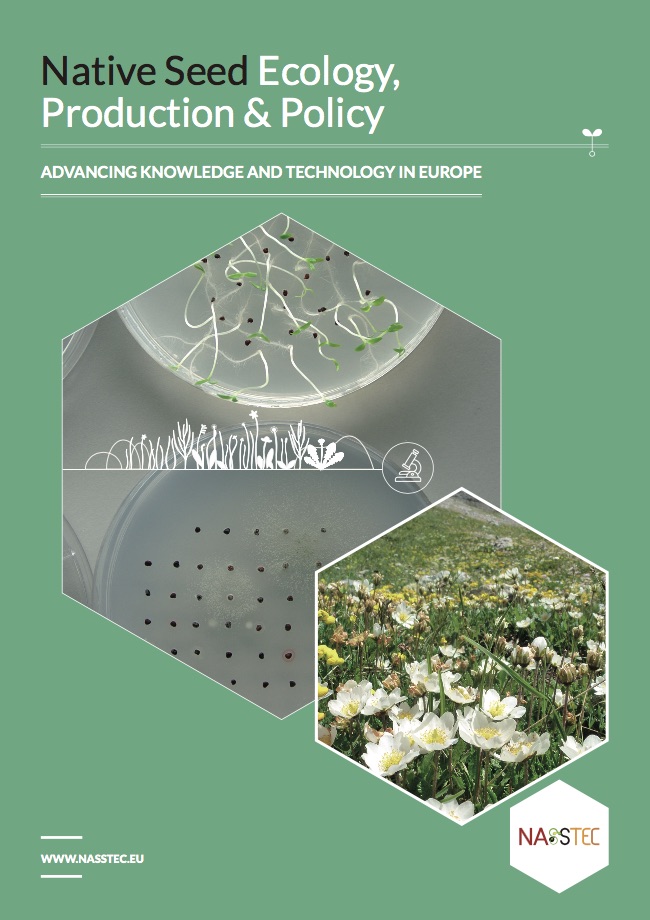
“Delivered by a team of 42 experts from the NASSTEC project and associated partners, the book is the first of its kind and is extensive in its coverage – summarising practical approaches on a wide range of topics from seed handling and germination methods to government policy recommendations for ecological restoration and the native seed industry.”
“Increasingly, the true value of native plants is being recognised, and their seeds deployed to restore and conserve degraded habitats globally. While the native seed industry is relatively young, its ambitions are high and driven by science-insight gained form industry-academia partnerships.”
The Hutton Institute’s Pete Iannetta writes “industry-academic partnerships are especially challenging in many ways. However, the rewards are considerable and especially to repair the damage of ‘old-ways’, and to work with nature to help safe-guard more-sustainable futures”.
The Handbook will be formally launched at the 8th World Conference on Ecological Restoration in Cape Town, South Africa at the end of September and it is freely available on ResearchGate.
GS writes: it is rewarding that our Living Field experience went into the NASSTEC Project. Congratulations to Marcello and colleagues for producing this handbook. [More to follow ….]
VEGETABLES FROM THE AIR
And here is the image of the Vegetable Map of Scotland created by the Living Field and The Farm. Work began in autumn 2018 and was completed in early summer 2019.
It’s hard to tell at first glance that this is a living structure, but yes … this drone image is of grass and rocks shaped to form the outline of mainland Scotland. Vegetables such as potato, carrot, beans, peas and brassicas were then planted where they are most commonly grown. A great idea … well appreciated at Open Farm Sunday and after.
SUMMER 2019 IN THE GARDEN
What a year! What weather! Blizzard at Beltane. Dry heat. Cooling wet. Muggy, humid heat. Drenching rain. The meadow displayed its floral riches early but the heat moved it through its phases too quickly for the bee-plants to last well into the autumn as they usually do. The weeds thrived – the neat medicinals bed got out of hand by August and hairy tare was smothering everywhere. Still, most flowering plants behaved themselves.
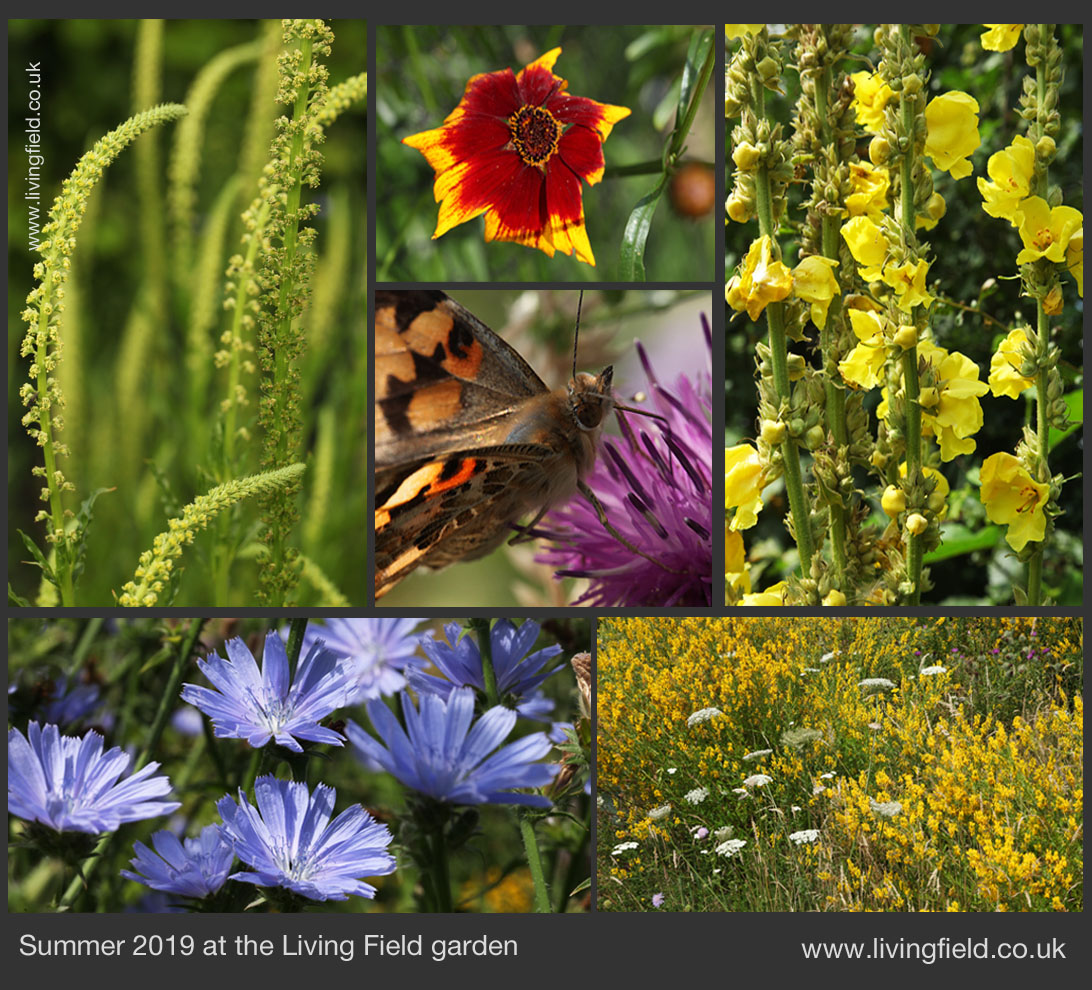
The panel above shows (upper left) flowering stems of weld, grown this year among flax (not shown); single flower of dyer’s coreopsis, sown anew from seed this year; part of a knapweed head with painted lady feeding (centre); mullein in flower at the back of the medicinals bed; the yellow mist of flowering dyer’s greenweed, nitrogen-fixing member of the brooms, the white umbels of wild carrot emerging through it; and the blue of chicory flower heads.
OPEN FARM SUNDAY 9 JUNE 2019
The Living Field garden and cabins were mobbed again at this year’s event. The main exhibit was the Vegetable Map of Scotland created by the Living Field team and The Farm – see Vegetable Map made real, drone images at Garden from the air and Veg posters from Open Farm Sunday. The LEAF Open Farm Sunday main page gives news of the event countrywide. Photographs below were taken on the day.
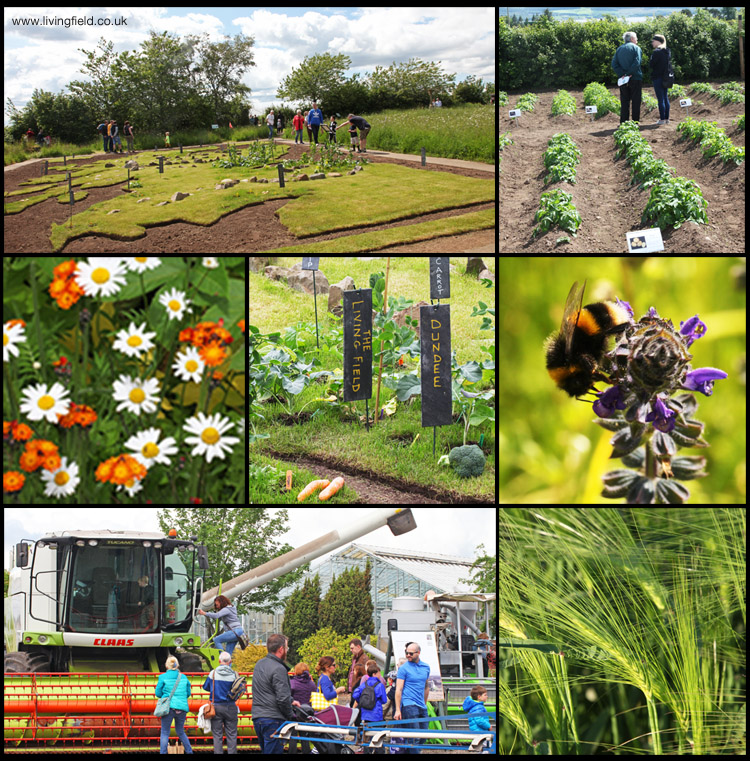
UPDATE FROM DUNDEEASTRO
Dundee Astronomical Society‘s new telescope should be ready for observations later in the year when the night skies darken. In the meantime …
On noctilucent clouds, Ken Kennedy writes (21 May) “we should perhaps see the beginning of the noctilucent cloud season soon as there usually is a report or two by the end of May. With the Sun being so inactive I’m hoping for a good active NLC season and perhaps a few displays with high elevations as there were last year. Observers on the south coast of England reported NLC almost overhead several times and this was confirmed by Cora Randall who analyses the CIPS images of NASA’s AIM satellite.”
On observations of the moon with his 8″ telescope “One of the nights was quite stable and I managed to capture a few of the ‘cracks’ on the Moon’s surface – the Hyginus Rille which is a dogleg volcanic feature and the finer rilles round nearby Triesnecker crater” (see image in left column).
MAY IN THE LIVING FIELD GARDEN
An inconstant year 2019 – never know where you are with it. Cold Beltane (about 5 May) with blizzards in some places. But things started to move later in May.
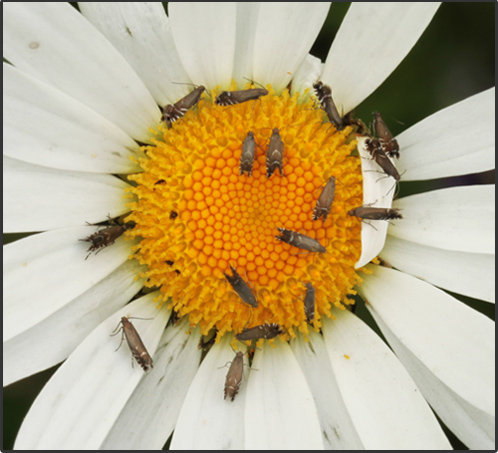
The meadow’s progress reveals three main legumes – red clover, common vetch and the bird’s-foot-trefoils, the latter two well in flower. They’ll be fixing nitrogen – a service to the community! Meadow clary (not much this year) is in full flower and ox-eye daisy just unfolding towards the end of May.
Gladys and helpers have been preparing barley varieties for the Barley Timeline and these are now out in the raised beds. A range of veg is hardening off and ready to be planted on the map of Scotland.
The medicinals and dyes beds lost some old friends over the winter. Two of three cotton thistle rosettes died but there are others on the way for next year. Dye plants weld and coreopsis and the fibre plant flax have been planted and some of the other dyes rearranged. The year moves on.
KIT MARTIN’S FRAY EXHIBITION
An exhibition of photography on paper and fabric – held at Verdant Works Dundee 6 April to 20 June 2019. Kit writes –
Verdant works (Dundee’s Jute Museum) was built on lush meadows, once buzzing with insect life. We have now lost a huge amount of our meadows, throughout Scotland. And the insects that lived in them are in trouble.
The exhibition takes a forensic look at insects and wildflowers using digital and historical photographic processes. This exhibition looks closely with admiration at some of our essential yet diminishing pollinators and the wildflowers on which they feed and by chance, pollinate. Most of the specimens involved are from museum natural history collections.
Printing on fabric and paper, and making use of jute and linen, it includes hand printed cyanotype on textiles, digitally printed textiles, digital photographs on paper and lightbox and hand printed cyanotypes on jute paper.
More …. Cyanotypes by Kit Martin and Restored High Mill at Verdant Works … and see Kit’s upcoming workshops at kitmartinphoto.
COMMUNITY / FOOD / ENVIRONMENT
Here’s a few links to groups working to foster activities between community, environment and food (among other things):
Creative Art Works use their experience in art and design to support and promote workshops, community engagement, education, festivals and events For a start, see their Signs, seeds and woods video on creative-art-works.org.
Scotland the Bread Community Growing from seed to slice: a collaborative project to establish a Scottish flour and bread supply that is healthy, equitable, locally controlled and sustainable. See for yourself at scotlandthebread.org.
The Field A place to grow vegetables, by the community, for the community. “We grow along organic principles and supply the village’. Web site @thefield Dunkeld and Birnam Community Growing.
ORIGINAL LIVING FIELD WEB SITE CLOSED
The Living Field was granted some money to build an original web site many years ago. We transferred much of the content across when this new site went live in 2014. Two things were retained – the ‘Living Field CD online’ and the online ASIS seed identification guide. We now bid farewell to both. The web site has closed and visitors will be redirected here (from Feb 2019).
The Living Field CD presented educational material on crops and environment for primary and early secondary education. It was built by a wide range of people including school teachers, pupils and many institute staff, but it has not been possible to keep it up to date. Copies of the CD can still be obtained from gladys.wright@hutton.ac.uk.
ASIS was the product of a collaboration between Living Field staff and students from Abertay University. It proved useful for many years but has since become obsolete.
TINA SCOPA’S NEW EXHIBITION

Tina writes that she has a joint exhibition supported by Fife Cultural Trust at FifeSpace gallery, Rothes Halls, Glenrothes KY7 5NQ from today 19 January 2018 for three months.
She also has two pieces on show at the Mall Galleries in London as part of the FBA Futures Exhibition.
WINTER SOLSTICE 2018
Throughout December, an unpredictable mix of clear days and frosted ground with drear cloud and rain, yet no deep cold so far this winter. The shortest day on 21 December has barely seven hours between the official sunrise and sunset and not much more light. It’s the time of year when the annual temperature cycle lags far behind the solar cycle. But from now the days will lengthen, slowly at first, hardly noticeable until well into January; and while the lengthening days signal the year has turned, the air and soil will continue to get colder, as shown on the solar-temperature curves at Winter solstice.
RECENTLY ON THE WEB SITE
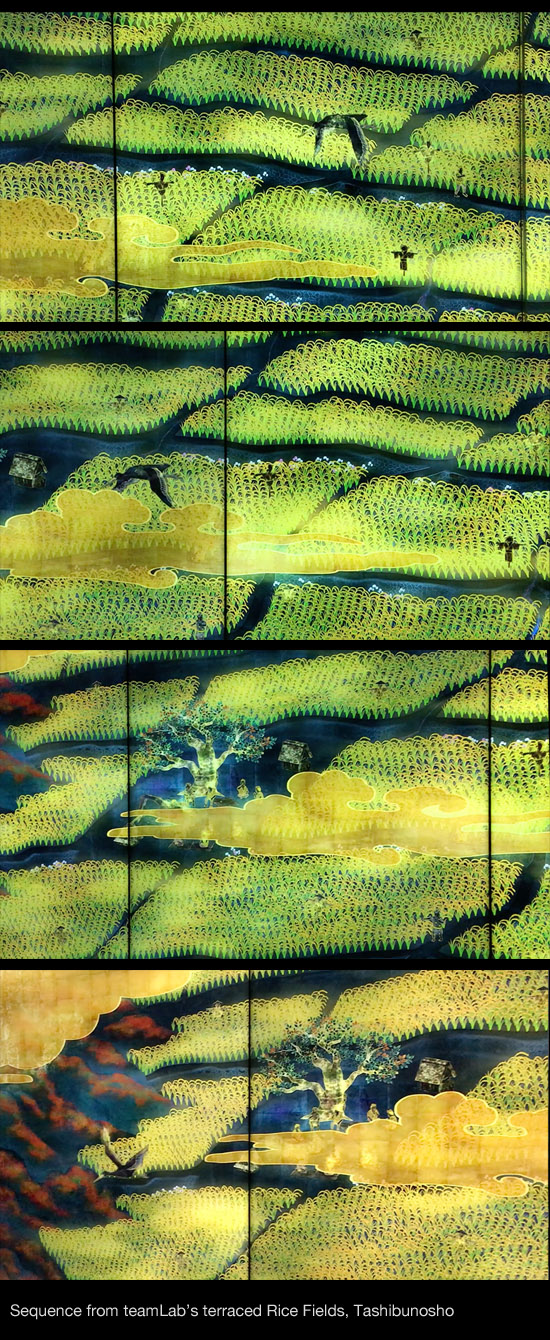
10-year retrospective of the Living Field’s work with cereal grains from seed to crop to harvest to flour to food – including our open days and road shows at Ancient grains at the Living Field – ten years on.
Singapore’s great ArtScience Museum and its interactive displays by teamLab are profiled at Where art meets science: Singapore and Real time virtual field.
The garden pages continue to be undated, the Pond and ditch section recently revised with new blocks of images.
Notes and images on Andy Goldsworthy’s Hutton Rocks sculptures at the National Museum in Edinburgh.
Read about Tina Scopa’s plant pressing workshops at Open Farm Sunday and the Hutton displays at the Highland Show.
A RIGHT MINGER
Minger – the name of a new cheese from Highland Fine Cheeses in Tain. It’s been getting some press coverage in recent days because (in case our international readers are unfamiliar) the term tends to be used as a mild insult, meaning something or someone that smells. Apparently, up-market food outlets are concerned for their customers’ sensibilities. The cheese gets its name from an odorous, orange outer coating. Back down the line, ewes grazing in Caithness and the Black Isle provide the milk. The Times newspaper of 29 October 2018 tells the story. (Is it really smellier than an epoisses that you forgot to put back in the fridge!)
OCTOBER IN THE GARDEN
The astronomers from DundeeAstro have been busy preparing their new telescope. There will be training sessions for members interested in using it over the winter; and next year they are offering a night for Hutton staff. Should good.
Time to begin sorting out the various beds in preparation for next year. But what’s this – a big patch of turf in place of the arable plots ? And someone put big stones among the turf. What’s going on? The plot will become clear after the turning of the year when the winter merges into spring. Wait and see.
SEPTEMBER IN THE GARDEN
Everything was well ahead of its usual timing after this year’s heat and lack of rain. The meadow plants had stopped flowering in August, even the field scabious dried and useless to the bees. The meadow was cut in early September and the hay removed.
The many bees that frequent the garden must have suffered this year. It was rare to see a red-tailed bumble bee at any time. Flowering in the meadow and medicinals bed stretches into October most years, but there is little left apart from the betony and few legumes.
Jean Duncan’s barley timeline has also been harvested. More to follow.
LATE JUNE UPDATE
June 2018 continued the dryness of May. New plants put in the garden had to be watered a few times to get them to survive.
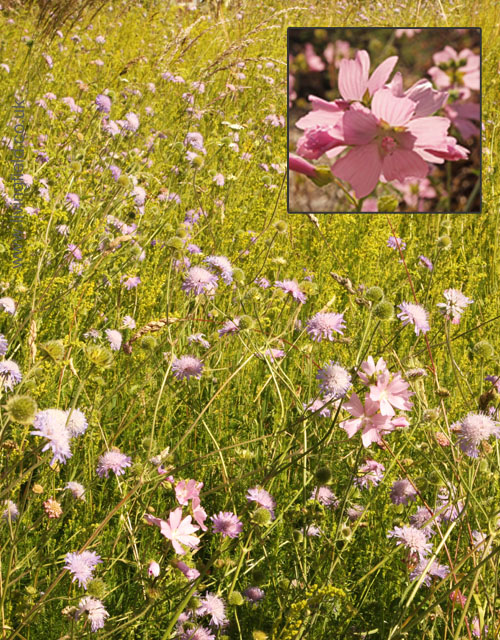
The barley timeline continues to progress – see a time lapse on Twitter.
Visitors have commented on the meadow’s splendour in late June: the ox-eye has receded and the mauve-flowered field scabious, much appreciated by the many bumble bees, is rising above the legumes and lady’s bedstraw.
Our artist friend Tina Scopa held her plant pressing workshop again at Open Farm Sunday, this time at Glensaugh farm near Fettercairn on 10 June. Then she was asked by the Hutton Institute to do the same for a few days at the Royal Highland Show in Edinburgh, where she set up among the RHET displays. A great collaboration developing.
GOINGS ON IN THE GARDEN
The garden’s birds and insects saw some unusual activities in May 2018.
Dundee Astronomical Society completed their ‘shed’ which now houses a more powerful telescope. There will be an opening event later
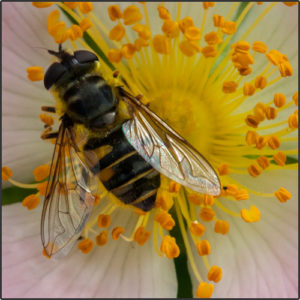
in the year and opportunities for Hutton staff to see the stars. Learn more at their Dundeeastro page on this site.
Jean Duncan has been organising a barley timeline, demonstrating change in varieties since the 1800s. They are behaving themselves (more or less) all in rows. Tracy Dixon from Dundee University (exCECHR) fitted up a couple of time-lapse units to record the changes in barley with the season.
Note there will be NO Open Farm Sunday here this year – the event is moving to the Institute’s Glensaugh upland farm – for details see the Hutton-LEAF web site. Otherwise it’s been unusually hot and dry for May.
LIVING FIELD ON TWITTER
The Living Field has taken to Twitter to help manage and promote its growing role in outreach and education. @TheLivingfield will post updates and progress with what’s going on in and around the Living Field garden. @curvedflatlands will link activities in the Living Field project to current global research and debate on sustainable agriculture and environment. Follow us …..
NEW ON THE WEB SITE
We continue our investigations of the bere line with Bere country, contrasting distributions of bere and barley in the 1854 agricultural census and Grannie Kate returns with more bere recipes at Bere scones.
New images at some of the Garden pages on plants – Cereals, Dye plants, Vegetables. And after a very long and cold winter, here are some photographs in the Living Field Garden in April and early May.
The current Living Field image (top right) is Hutton Rocks! – a slightly processed photograph of one of Andy Goldsworthy’s split and carved sandstone sculptures on the Hutton Roof at the National Museum of Scotland.
EXHIBITIONS MARCH 2018
The Living Field is pleased to work in association with artists and craft workers. Two of our friends have exhibitions current or soon to open.
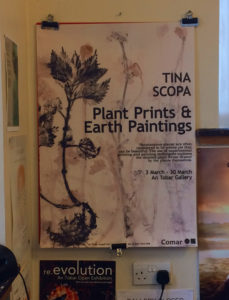
Tina Scopa’s exhibition on Plant Prints and Earth Paintings will run at An Tobar on Mull from 3 to 30 March 2018. Tina works with a range of methods including plants and soil as media for art. Find out more on the Comar web site. See also Tina’s Living Field web page.
Kit Martin is an experimental photographer specialising in plants and insects. Some of her cyanotypes are being shown at the Bones exhibition held at Perth Museum and Art Gallery from 17 March to 24 June 2018. See more at the Culture Perth and Kinross What’s On web pages. We are exhibiting some of her cyanotype images on the Living Field site .
RETHINKING PLANTS: THE SCIENCE BEHIND SUSTAINABLE RESOURCES
“Find out more about the cutting-edge research into plants being carried out at the University of Dundee and the James Hutton Institute. ” A series of sort talks to complement the Beauty and Science of Plant Exhibition (see below). Including talks from Geoff Squire, Pete Iannetta, Ali Karley and Isabelle Colas from the Hutton, and Mark Cutler from the University.
Venue: Baxter Room, Tower Building, University of Dundee DD1 4HN. Date: Tuesday 27 February 17:30 to 18:30. Details: Eventbrite.
DUNDEE’S SWELTERING UNDER TROPICAL HEAT
This is true! The more so in Winter, specially if you’re in Cairns! Coming up on the Living Field web site are a range of articles and images, some you wouldn’t believe, other you always knew were true. In the next few weeks:
Colours of silverweed – plants and animals competing with plastic, eating it, dying through it; the impossibility of removing all of it.
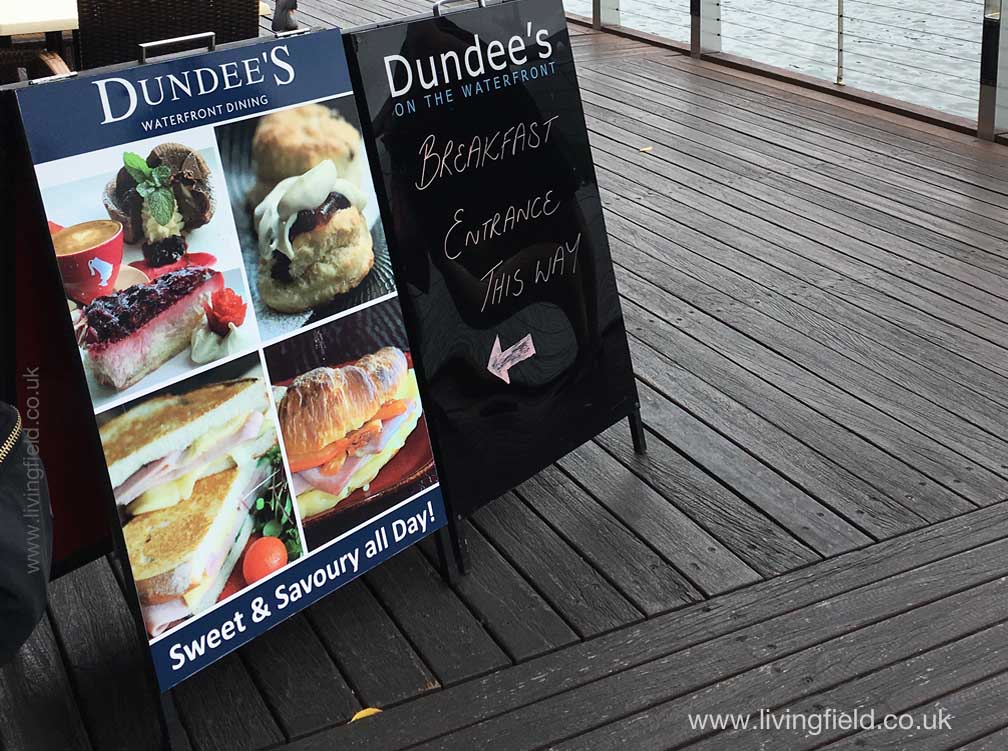 The amazing utility of plants – turning maize cob-husks into art paper and cheroot wrapping.
The amazing utility of plants – turning maize cob-husks into art paper and cheroot wrapping.
All about chestnuts in Portugal, including recipe for chestnut soup.
Open Farm Sunday 2018 preview.
Plans for a Living Field garden exhibit on vegetables in 2018.
And the latest images and customs around the February cross-quarter day.
NEW ON THE WEB SITE
Quick update on new pages and posts.
- The famous Beans on Toast project has been given its own space from where you can go to Sarah’s original study ….
- Beans on toast – a liquid lunch which looks at the constituents and the water used in making this simple dish, then more on water at
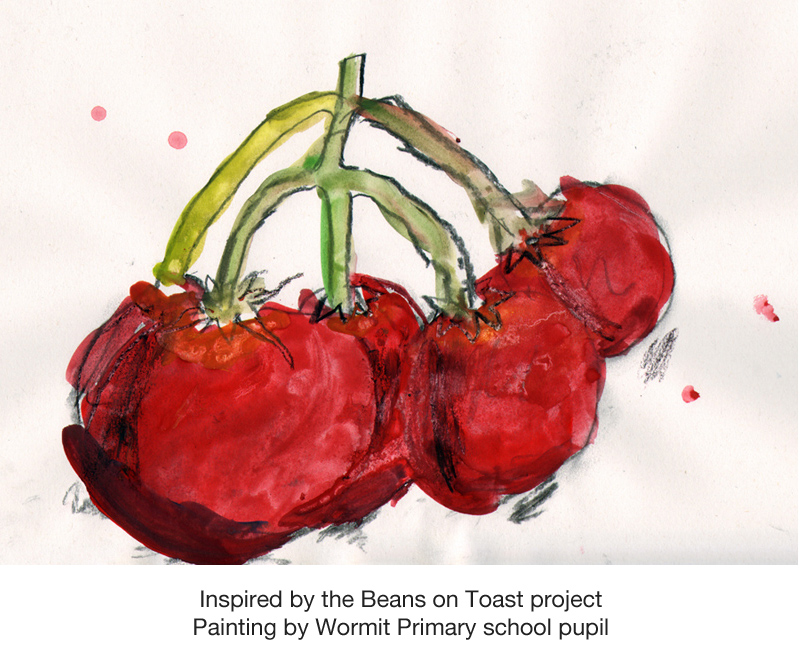
- Seed to sewer – the water footprint of a simple meal, which attempts to estimate how much water is needed (a few bathfulls) to grow the crops and process their products just to get them into the tin or package, and finally …..
- The art and craft that comes out of the Beans on Toast roadshow and open day exhibit – Where does our food come from?
And though Beans on Toast hogs the show, we also have –
- Paterson’s Curse – the brief story of a borage-family plant that became an invasive weed in Australia
- Bangkok Market – sights and reminiscences of vegetables and fruits in south east Asia
And lastly, some new images from the garden at the Winter Solstice on 21 December 2017.
THE BEAUTY AND SCIENCE OF PLANTS – EXHIBITIONS DUNDEE
Matthew Jarron from the University of Dundee’s Museum Services sends this note on two forthcoming exhibitions. Opening times from this weekend 20 January 2018, Mon-Fri 09.30-19.00, Sat 13.00-17.00.
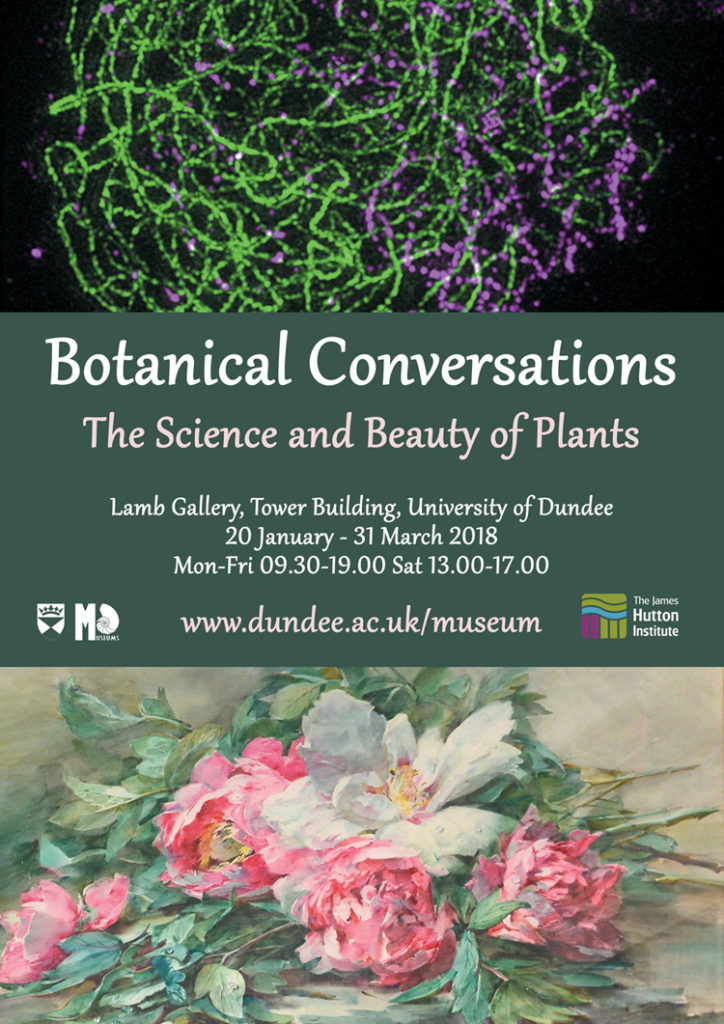
“In the Lamb Gallery, the exhibition Botanical Conversations features highlights from the University’s amazing Herbarium collection, stunning botanical teaching charts and beautiful works of art inspired by plants. It describes the history of botany teaching at the University and also showcases some fascinating projects being carried out both here and at the James Hutton Institute.” Exhibits also include the Citizen science GROW Laboratory at DJCAD, The Beauty of Roots exhibition, and the poetry of Heather Yeung. Runs until 31 March 2018.
“Meanwhile, in the Tower Foyer Gallery, Exploring our own Backyard has been put together by the University of Dundee Botanic Garden and highlights the current project to revamp the Garden’s native plants area. This is the jewel in the Garden’s crown and is still unusual in botanic gardens, which traditionally showed little interest in their natives. Dundee’s garden is young, founded in 1971, and it was committed from the start to telling the story of Scottish plants and their ecology. Runs to 17 March 2017.
VEG ON THE EDGE
The Living Field is pleased to post an article by Transition Turriefield on their experiences with growing vegetables as part of a community project at a latitude of 60 North. Long days in summer mean a good solar income, but temperature and soil condition impose severe limitations to plant growth. To have grown and sold such a range of produce this far north is a major achievement.
We sometimes think we have problems in the Living Field garden at 56 North, but here the soil is deep-ish with a rarely limiting water-holding capacity and not too much organic content. You have to applaud the Turriefield team for persevering against the odds. An example to all doubters! See their account at Transition Turriefield.
NEW ON THE WEB SITE
In addition to Transition Turriefield (above), new posts and pages in and around October and November 2017 include:
- Can we grow more vegetables? ….. including a map of vegetable and pulse crops in Scotland prepared as part an ongoing collaboration with Nourish Scotland for the Vegetable Summit (see below).
- The Watermill at Blair Atholl – where are the corn fields today?
- Old barley varieties and landraces …. addition to the garden/cereals page with images and notes on a range of barley landraces and old varieties, including Spratt described by Lawson and Son in the 1850s.
- Update from Jean Duncan with new root art.
- New images from the Garden at the autumn equinox.
VEGETABLE SUMMIT EDINBURGH
Tuesday 24th October 2017 from 09:45 to 16:30 at the Royal Botanic Garden Edinburgh
Nourish Scotland sent us the following notes and link. On 24th October 2017 London, Edinburgh, and Cardiff will host Vegetable Summits where wholesalers, retailers, restaurateurs, caterers, government representatives and manufacturers will be making a pledge for more veg.

We should be eating about 3.5 portions of veg a day, but most of us fall short by one portion and many of us, including children, are eating hardly any veg at all. Yet, 79% of UK adults want to be eating more veg in their diet. Our environment makes it difficult to eat well: from aggressive junk food advertising, to limited availability of veg in convenience stores and high prices, to lack of cooking skills.
We will be hearing about the barriers to veg consumption from each sector, and from the trailblazers demonstrating great leadership in this area. We will see bold action as organisations pledge to do their bit to increase veg throughout the food system.
We invite food businesses – from production to retail – to attend to discuss how collaborative action can make veg the easy choice. For the programme and eventbright booking link, see http://www.nourishscotland.org/projects/peas-please
NEWS AND UPDATES LATE SEPTEMBER 2017
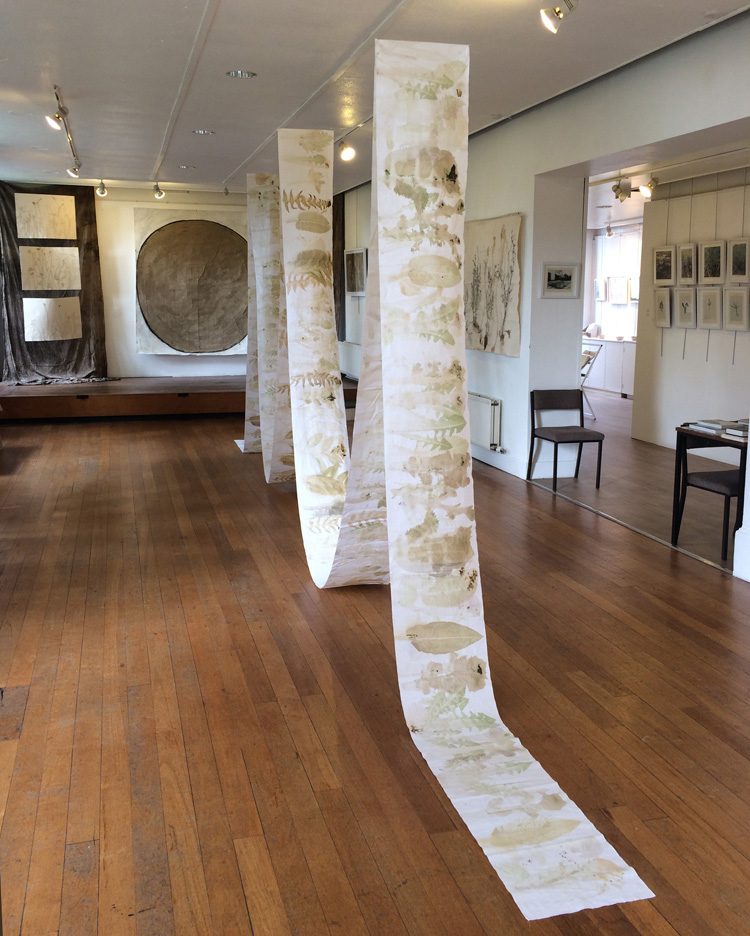
Tina Scopa’s art exhibition at the Roseangle Gallery, Dundee in August is shown in some images provided by the artist – right, and more at Tina’s web page on the Living Field.
The Food Life in Angus is a collective that aims to reconnect local people and with local food. They have organised a range of events over the coming weeks and months. Looks great. For details see the eventbrite page.
The Carse of Gowrie Sustainability Group has organised a Patrick Matthew Festival Weekend in the Carse between Dundee and Perth. The opening event is at the Inchture Hotel, Inchture on Friday 29 September 2017. Other events follow: check the twitter page on Patrick Matthew. There is also a PM trail planned along the Carse. The wikipedia entry gives more on his life and contribution.
DUNDEE ASTRONOMICAL SOCIETY NEW OBSERVATORY
The structure covering Dundee Astronomical Society‘s telescope in the Living Field garden was damaged some time ago in a storm. After some planning and discussion with the Living Field team, and with the blessing of the Institute, the astronomers are now in the process of making a new cover to be installed later this year.
In preparation, Ken Kennedy and friends will be dismantling the existing cover and removing the telescope for safe keeping until the new structure is in place [11 September 2017].
Update 26 Sep: The old telescope dome is now ‘off’ and disposed of (thanks to Gladys Wright and Jim Wilde for arranging the mini-skip). A strange looking stump, shielded in plastic, sticks out of the concrete pad’ and we are told the construction of the new ‘shed’ is moving apace. [Ed: can’t wait to see it!]
NOW IN THE GARDEN
The Living Field Garden at the end of August 2017:
- Most vegetables now harvested or left for seed, Brussels sprouts and runner beans still growing, the potato varieties waiting in the ground to be unearthed.
- All ancient and modern cereals now matured, soon to be
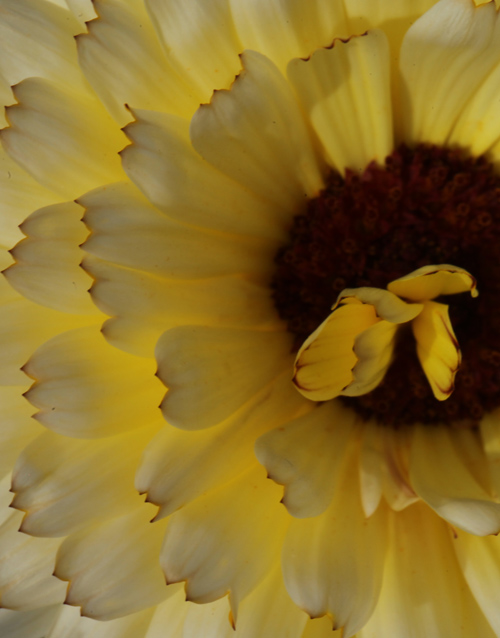 harvested, the seed saved – the emmer, spelt, bere barley black oat and rye have been propagated in this way as landraces for many years.
harvested, the seed saved – the emmer, spelt, bere barley black oat and rye have been propagated in this way as landraces for many years. - Bee plants now mostly finished – some field scabious, viper’s bugloss, wild marjoram, wild mint, a few betony still with flowers; of the N fixers, red clover and yellow vetchling will continue for some weeks. There are still a range of bee species but numbers are falling.
NEW ON THE WEB SITE
- Vegetables in the Garden – updated page with many new photographs of this year’s vegetables and herbs.
- Labours of the Months – medieval wall paintings at St Agatha’s Church, Easby, Yorkshire: a contribution to the Living Field pages on The Year.
- Bere battered – another bere-meal recipe from Grannie Kate
- ScoFu: the quest for an indigenous Scottish tofu – article by Chantel Davies on making tofu from locally grown beans.
TINA SCOPA ART EXHIBITION AND WORKSHOPS
Visitors will be aware of Tina Scopa’s recent work with the Living Field, including her well attended workshop in the Garden and her article with images of her Edaphic Plant Art.
She has since been preparing an exhibition at Dundee Art Society from 14-20 August (poster right) and has been interviewed by ArtPlantae who published an extended Q&A session about her work on 24 July 2017 under the heading Plants that draw themselves.
Tina has two workshops coming up: 30 July, Sunday at Tayport Community Garden and 13 August, Sunday at Ninewells Community Garden, Dundee.
We will be working with Tina on new projects over the coming months.
NOW IN THE GARDEN
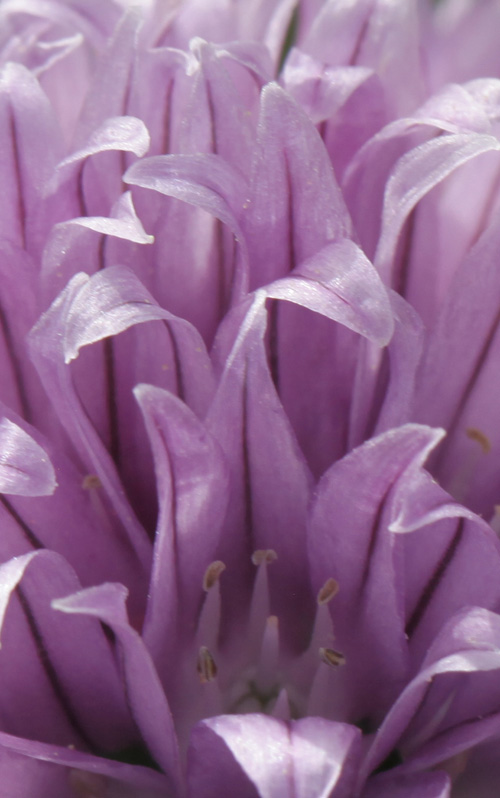
The Living Field Garden in the middle of July 2017.
- Harvesting the vegetables and herbs – peas, kale, lettuce, parsley, courgette – will continue into the autumn
- Cereal ears all maturing, the bere almost there
- Aggressive weeds trying to take over – pulling up the ragwort
- Bees active on a wide range of plants – field scabious (the long lived favourite), greater knapweed, betony and viper’s bugloss (nearly finished); hemp agrimony flowers starting to open.
- Medicinals, dyes and herbs – cutting back the comfrey stalks after flowering, staking up the cotton thistle and chicory, preparing a spot for some honesty seedlings.
OPEN FARM SUNDAY – PRESS AND TV
Over 1000 people visited the site on 11 June. Wet and more wet, with the occasional downpour, but good to see the local community is interested in what is being done here in sustainable agriculture and environment. Some images at The Garden on Open Farm Sunday.
As part of the build up to Open Farm Sunday, to be held 11 June 2017, the Garden featured in an article by Gayle Ritchie in the Courier of 3 June. A PDF version is accessible.
The television programme Landward visited the site on 2 June to film a range of activities that will take place in and around the Garden on Open Farm Sunday. The clips will be aired on BBC One Scotland on Friday 9th June, 7:30 pm, and on BBC Two Scotland on Saturday 10th June, 4:00 pm. (No spoilers, sorry.)
NOW IN THE GARDEN
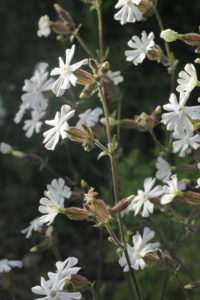
The Living Field Garden at the beginning of June 2017.
- Raised beds in the west garden now filled with a range of vegetables and herbs as part of an outreach project on vitamins and minerals in food.
- Ancient and modern cereals beginning to show their ears – also maize and pumpkins well established.
- Bee plants in flower – field scabious, comfrey and viper’s bugloss.
- Preparations are well under way for Open Farm Sunday on 11 June.
NEW ON THE WEB SITE
- Article by Jean Duncan on Maize paper, showing how to make paper from parts of maize plants grown in the garden.
- Burnt whin – the effect of random bush fires on juniper, a species at risk.
- On the edge – notes on extensive lazy bed field systems and crops grown from 1690s around Eoropie, North Lewis – a link in the Bere line.
- Beauty of Roots exhibition in Dundee by Paula Pongrac, Jean Duncan and friends.
COMING SOON
Open Farm Sunday will be held at the Institute on 11 June 2017. As in previous years, the Living Field garden will be the alive with activities. Check the Hutton Open Farm Sunday page for details nearer the time.
Some rain we hope. The dry spring continued. So dry that some farmers have been irrigating spring-sown crops to get them germinated and putting out leaf and root. Irrigating spring sown crops in Scotland!! A article to follow comparing spring rainfall patterns over the last 1000 years. (See also notes on the Living Field garden.)
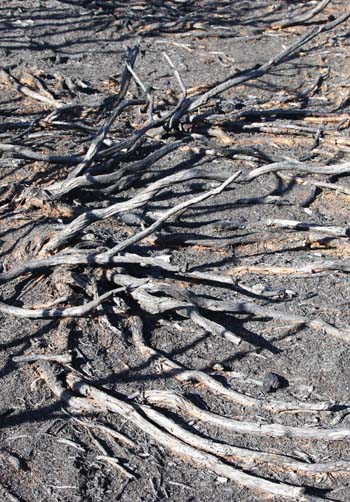
BELTANE
The early May cross-quarter day, usually on the 5th, known as Beltane in some cultures, traditionally meant the crops were sown, the blade was out (the first leaf of the cereals) and farming could expect increasing light and warmth, yet enough water in the soil not to worry about the young plants being droughted.
This year, a dry May followed a dry April. Beltane in 2017 brought more than festival fires. Areas of moorland and scrub were blackened by flame in some areas. The lack of rain was so severe that some spring sown crops were starting to fail, not germinating and not putting up the blade.
The winter crops, wheat and oilseed rape were fine, their roots having extended to depth over the previous months. There have been other dry springs in the last 100 years but only a few as dry as this. More on the May cross-quarter day at XQ2.
DUNDEASTRO
A few updates from our friends at the Dundee Astronomical Society.
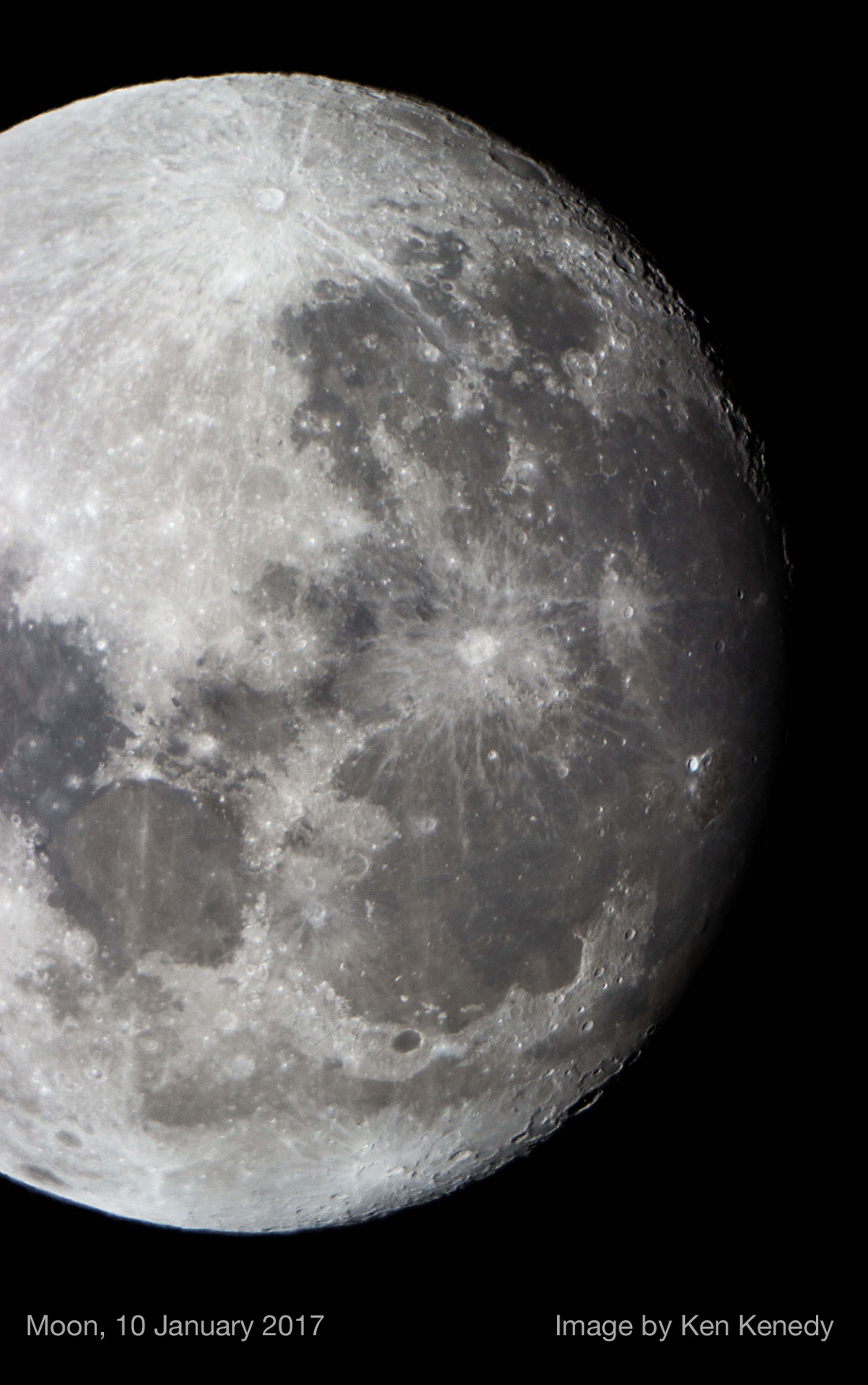 Their observatory at the Living Field garden, damaged some time ago in a storm, will be repaired in the coming months and used again for observing the skies.
Their observatory at the Living Field garden, damaged some time ago in a storm, will be repaired in the coming months and used again for observing the skies.- Ken Kennedy has kindly written an article on Noctilucent Clouds for the Living Field web site – see The Phenomenon of Noctilucent Clouds and the full article with images at Clouds on the Summer Horizon.
- Ken has also sent some images of the moon and of several galaxies which we will display over the coming weeks.
- Dundee Astronomical Society will be with us (we hope) at the forthcoming LEAF Open Farm Sunday at the Dundee site on 11 June 2017 – all welcome.
[11 April 2017]
FOOD LIFE SPRING FESTIVAL 26 MARCH
Our correspondent Anne Thomson sent the following note.
On Sunday 26 March 2017, The Food Life is holding a Spring Food Festival at Strathmore Mart in Forfar, bringing the Taste of Angus Festival to a close. “You can sip cocktails while browsing for fresh seafood, handmade chocolates, Arbroath Smokies, Forfar Bridies and freshly-baked artisan bread …… take your pick from a mobile patisserie, delicious vegan dishes and wood fired pizzas.”
Taste of Angus is a food and drink marketing campaign ….. to raise the profile of local produce, its producers and suppliers. More at www.visitangus.com/tastefestival and www.facebook.com/thefoodlifeangus
SPRING EQUINOX
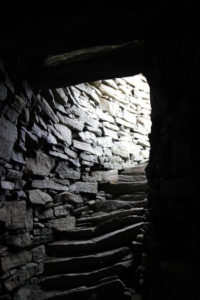
Twice a year, night and day are the same length. Yet though the autumn equinox marks the descent to winter, the air stays warm, there’s little chance of snow and crops could grow. In contrast, the solar equivalent on 21 March is a time of uncertainty: temperature lags well behind the rise in the sun’s intensity; deep snow some years, dry warmth in others.
Stone-, Bronze- and Iron-agers would be weighing up the best time to sow their spring grain. With technology, it’s still a lottery when best to sow.
This year it was more dry and warm than cold and wet. But not so warm that the wild plants are much more advanced than usual. Plants in the Living Field garden bide their time, as ever. You can move plants and they’ll hardly suffer.
More on the solar cycle, crops, plants and traditions at Spring Equinox. The image is of the stairs between outer and inner walls, Dun Charlabhaigh (Carloway Broch), Lewis, Iron Age, two days after the equinox 2017.
NEW IN THE GARDEN
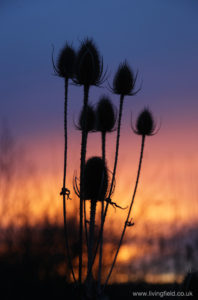
March 2017, only three weeks to the spring equinox –
- Preparations for the 2017 sowings are underway: the ancient cereals will soon be germinating in pots before being planted out in late April as young plants.
- Seeds are being collected and sown for a new display later this year on vegetables (and fruits) that accumulate high concentrations of nutritional elements and vitamins.
- Some of the medicinals and dyes are beginning to sprout – the garden angelica Angelica archangelica is one of the earliest and hardy against any late frosts; others, like marsh mallow Althea officinalis will not appear for a few months.
- The farm and workshop are carrying out late winter repairs to posts, gates and display panels.
FEEDING THE CITIES
As part of the 2000m2 Field of Enquiry project based at Whitmuir Farm, Geoff Squire and Ali Karley from the Hutton Institute will be presenting and discussing issues in food and food security at the session titled Feeding the Cities on 25 February 2017. Topics covered will include the history of food insecurity, intensification in the later 1900s, the present yield levelling and associated decline of ecological function, future internal and external threats to food production, alternative sources of protein and the potential contribution on nitrogen fixing legumes.
The session will be held at the Lamancha Hub in the village of Lamancha, south of Penicuik. There is more on the project at Whitmuir Community Farm while past and future events can be reviewed at 2000m2 Field of Enquiry Workshop programme. Thanks to Heather Anderson, project manager, for inviting us to the event.
[GS writes on 26 Feb 2017: great day – what enthusiasm, commitment and knowledge from those involved in 2000m2 – the organisers have drawn in such a range of people, a range of expertise over the 10 week-ends; looking forward to the result.]
BOTANISTS WITH KNIVES
Stephanie Frischie (from the US presently in Spain) sent a link to this web site The Botanist in the Kitchen – where botany meets the cutting board, and in particular the post of 28 December 2016 titled Closing out the International Year of Pulses with Wishes for Whirled Peas (and a tour of edible legume diversity). This is really excellent article, and excellent web site, blending food, natural products, evolutionary biology and …… botany.
Last time Stephanie was over here she helped out at one of The Crunch events Feel the Pulse. More to follow on the International Year of Pulses (now gone but not forgotten). Pulses are grain legumes, like peas, beans and lentils, high in protein and highly nutritious. To see how legumes are used in low-fertility cropping systems (as they were once here) see Mixed cropping in Burma.
TAM O’SHANTER GOUDIE PAINTINGS ON VIEW
Here is a rare opportunity to view the complete Tam O’Shanter paintings by Alexander Goudie. They will be displayed at Rozelle House and the MacLaurin Gallery in Ayrshire until 12 March 2017. As a taster, the paintings can be viewed online. This is only the second time thay have all been publicly on view. For ‘Tam’s blue bonnet’ and background on dye plants, potato, neep and Burns Night – see the article SoScotchBonnet on this site.
ORKNEY NEOLITHIC SITES ON TELEVISION
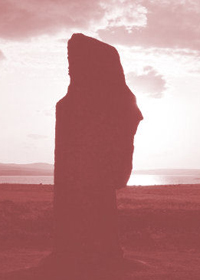
The present BBC 2 series Britain’s Ancient Capital: Secrets of Orkney is a great chance to learn more about neolithic Orkney and its european connexions. The series revolves around excavations at Ness of Brodgar. It’s been screened on Monday evenings and is continuing. Details on BBC iPlayer [posted 17 January 2017]
And the Royal Mail has just released Ancient Britain Special Stamps which includes one of Skara Brae, Orkney.
WINTER SOLSTICE 2016
A moist but not too cold solstice-time this year. The shortest day, near 21 December, the turning of the year. Climatic cross-currents, the days lengthening, but two more months of lowering temperature. You can image why the early Bronze age people who lived here aligned Clava Cairns and their other monuments to the winter solstice. The start of a countdown for how much time was needed to survive on the stored grain and livestock.
Now it’s imports of bread, rice and pasta that sustain us through the winter. But it’s still a tricky time for farming. Go back a year and remember the floods of winter 2015/16 that shifted cereal land from wheat and barley to oats and depressed the 2016 autumn harvest. Some images around the winter solstice are given on the Welcome page. More on the climate, weather, crops and midwinter festivals at Winter solstice.
NEW ON THE WEB SITE
Late 2016 –
- Connexions from Mike Whellans ‘Cornbread, peas and black molasses‘ at Dundee Jazz Festival to poverty-food in the US, chain gangs, slavery, maize, pellagra, and Goldberger’s revelation of dietary deficiency.
- Jean Duncan’s experimental etchings of root cross sections from micrographs by Robert Baker at Sectioned II.
- Images from the Living Field garden in early December at The Garden.
- Update for XQ4 (early November) including new images.
- Further examination of the effect on crops of the 2012 winter floods (commentary on the 2015/16 flood to follow).
IN CASE YOU MISSED IT
Reflections on Celts continues at The McManus Art Gallery and Museum, Dundee until 5 December 2016 – two iron age mirrors, the Celts in Dundee plus ‘a stunning 3D visualisation of the Dundee Law’.
Katy Dove – memorial exhibition at Dundee Contemporary Arts – films, prints, animatiThe gons with music, ‘inhabited landscapes’ until 20 November 2016.
EARLY NOVEMBER CROSS QUARTER DAY
The mid-point between the autumn equinox and the winter solstice, on or around 5 November: a transition, not cold yet, but low sunlight – a time to mark and remember, All Hallows, All Souls, Samhainn, Guising, Guy Fawkes, Galoshans, and in India, Diwali, the festival of lights. For more on the yearly cycles, the crops, the festivals – XQ4.

V&A MUSEUM OF DESIGN
The V&A Museum has been growing into its fantastic shape these last few months at the Dundee waterfront. Sam Edmond and Peter Nurick from the V&A team visited the Living Field garden and cabins in October 2016 to discuss collaborations with Geoff Squire, Gladys Wright and Gillian Stirton.
The V&A Community Garden Dundee – ‘an innovative design project at the heart of the city’s waterfront’ – is looking for volunteers to help with creation and maintenance. If you want to learn more or take part, contact peter.nurick@vandadundee.org.
WORMFARM INSTITUTE AND FERMENTATION FEST
Thanks to Stephanie Frischie for sharing these links on ‘the land-food-art-culture continuum’ –
“Dedicated to integrating culture and agriculture, the Wormfarm Institute is an evolving laboratory of the arts and ecology and fertile ground for creative work. Planting a seed, cultivating, reaping what you sow…both farmer and artist have these activities in common.”
And each year they hold Fermentation Fest – “brings together farmers, chefs, artists, poets and performers in the beautiful working lands of Sauk County, WI for nine days of tastings, demonstrations, cooking classes, art events, performances, food carts and more.” This year it’s on 1 to 9 October 2016. Go if you’re in the area: Wisconsin USA. Looks fantastic.
NEW ON THE WEB SITE
- Great quantities of aquavitae II – more Mr Wight in the 1780s
- Lone ragwort – late bee-haven
- September plants in the Garden
- The Crunch event at Dundee Science Centre
- Additions to the Bee plants section – betony and sage
- Oor Wullie in Dundee
- Barley and insects – meal to make bread with at Bere and cricket
- More of Vida Fakin’s paintings of hay-racks.
THE CRUNCH AT DUNDEE SCIENCE CENTRE
A series of exhibits and ‘meet the expert’ events will take place on topics of sustainable and healthy food on Saturday 10 September 2016 at Dundee Science Centre.
Exhibits connected to Living Field themes include Grain to plate (the basis of human civilisation – cereal crops, bread), Roots of Nutrition (plant roots taking up essential nutrients) and Eaten from inside out (parasitic wasps controlling crop pests). Image right shows barley (Huangyen) in the Living Field garden. More at The Crunch ….
IN CASE YOU MISSED IT
Last few days of the Macoto Murayama exhibition on ‘growth and form’ at Lamb Gallery, Dundee University.
The Celts exhibition continues at the National Museum of Scotland, Edinburgh until 26 September – quite stunning art and design, with connection not isolation as a main theme, e.g. Europe in the iron age (600-150 BC) and Britain and Ireland’s Insular Fusion 600-800 AD. (But why does agriculture hardly figure? More on this.)
Inspiring Impressionism / Daubigny / Monet / Van Gogh at the National Gallery Edinburgh 25 June to 2 October 2016. Landscape, farms, fields, crops and wild plants among other things.
NOW IN THE GARDEN
End of July and a week to the August cross-quarter day, the time of highest mean temperature, and the garden’s many midsummer flowering plants are now moving on to seeding. In their place, the late developers are coming to their peak – chicory, hemp agrimony, betony, wild marjoram. Recent images at the Garden page, including new addition blue-sowthistle (right).
FEEL THE PULSE
The second event in our contribution to The Crunch dealt with the beneficial role of pulses – beans and peas – in agriculture and nutrition. Pulses are among those plants (the legumes) that fix atmospheric nitrogen and so reduce the pollution of air and water by mineral fertiliser. They also offer a high protein food to balance cereal grain in the diet. The Institute’s display, hosted on a fine sunny day at Baxter Park, Dundee by Pete Iannetta, Philip White and Stephanie Frischie, was part of Picnic in the Park, 28 July 2016.
CRUNCHING GRAIN
Gill Banks and Linda Nell hosted an exhibit on grain to plate, the making of bread, contrasting old and new cereal varieties, showing how some types ‘rise’ more than others in baking and how to get the glutinous and nutritious saitan from flour. The event was part of the The Crunch, a UK-wide festival, the local events in which are organised by Dundee Science Centre, this one at the Maxwell Centre in Dundee on Friday 1 July 2016.
SOLSTICE TIME
The longest day and the highest solar income, around 21 June each year. The winter crops sown last autumn are soaking up the sun, but many of those sown in spring still have leaf to grow if they are to yield well in September. It’s still a time of uncertainty – the sun’s period above the horizon changes very slowly day by day but the cloud cover and wind direction, and therefore temperature, can bring periods of heat or cold and damp. A time for observing the rituals. More in The Year at Summer Solstice and at Huxter Shetland.
IN THE GARDEN
Leading up to the solstice … still weeding to do and the medicinals bed to sort out. More than a few of these plants develop late, especially if they self-seed, and have to be noted, nurtured and then transplanted (sometimes to pots for a time) for next year. The cotton thistle is back but the madwort seems to have gone, our last plant until we can find more of the species.
The meadow is well into flower and populated with pollinators. Of the meadow legumes, common vetch continues as the most common this year, but now the trefoils are in flower and more visible while red clover still appears among the grasses. The main legumes species shift around in numbers from year to year. Exciting if you’re into legumes.
[mid June 2016]
TAY ESTUARY AND REEDBEDS – TRY THESE
The Living Field lies on farmland above what is now one of the most extensive natural reedbeds in the UK, providing whole stems for thatch. Here are some links. For a general view of the development of the Tay, see the Inner Tay Masterplan 2012-2022. A note from the Tay Landscape partnership on the Tay reed beds. From the RSPB, Bearded tits thriving in the Tay reedbeds. And theTay and Earn Trust About page.
[16 June 2016]
NEW ON THE WEB SITE
- Short profile of poet and writer Lesley Harrison
- Dundee Festival of Design with Firth of Tay by Cally Booker (silk weave)
- New image blocks on the garden’s habitats and living exhibits pages.
- Eaten from inside out – learn about parasitoids.
MAY CROSS QUARTER DAY
The early May cross quarter day lies between the spring equinox and summer solstice. The ground cultivated and the crops mostly sown. A time of fire-festivals and maypoles. For graphs, notes and images, see XQ2 in The Year.
[Around 7 May each year]
IN THE GARDEN
The arable plot has been cultivated and will be returned to the original rotation of cereals, potato, vegetables and fallow. The medicinals bed has been part-cleared; many of the plants have strayed out of their allotted space, and will soon be rearranged into families – Umbellifers, Composites, Borages, Labiates, etc. That tall, self-seeded tree is felled and removed (great job done by the farm). The small ‘pond’ is full of tadpoles. The meadow is putting out its young shoots of lady’s bedstraw, field scabious and a few wild legumes. Yet despite the high sun, the air is cool and growth is slow.
[25 April 2016]
NEW ON THE WEB SITE
- The beginning of a set of pages on the Slovenia artist Vida Fakin, including a translation of exhibition notes from 2015, in collaboration with her family. See also More than Landscape (2).
- More images and text at 5000 Years – Dyes.
[7 April 2016]
IN CASE YOU MISSED IT
AERIAL ROOTS is a multi-media web resource launched in 2007, from artist Su Grierson (looking at issues relating to land and landscape using image, text, sound and video). Really worth exploring and good for schools, groups, etc. See www.aerialroots.org and also her main web site for more exhibitions and projects www.sugrierson.com.
And now in Edinburgh – CELTS – a major exhibition running from 10 March to 26 September 2016 at the National Museum of Scotland , Edinburgh. Details on their What’s on page.
[26 March 2016]
SPRING EQUINOX 2016
The land is still recovering from the very wet winter: many autumn sown cereal fields showing yellow not green, and puddled still; areas of crop lost and areas still to lose. Here’s some news and happenings from other parts.
- Transhumance in Transylvania – the blocking of seasonal sheep migration routes – BBC News Magazine 24 March 2016.
- Farm to plate – but which farm? NFU’s take on fictional farms 22 March 2016.
And see Spring Equinox atThe Year for this time in the annual weather cycle.
NEW ON THE WEB SITE
 Dye plants, dyestuffs and dyeing – new pages in the 5000 – Plants series on natural dyes, just opened, with more to follow.
Dye plants, dyestuffs and dyeing – new pages in the 5000 – Plants series on natural dyes, just opened, with more to follow.- Reno the philosophical fox gets a style makeover from Grissel. We hear he won’t lose his cynical mocking angry self.
[9 March 2016]
IN THE GARDEN
The hedges have been trimmed. One of the self-seeded trees has become too tall and will need to be felled. The early plants, woad and angelica, are starting to expand. The leaves of woad are winter-hardy, the floral stems now beginning to elongate. Angelica disappears over the winter, then puts out bright new leaf, which by early summer will have harvested enough light to make its giant stems. The hazel catkins are swaying, the elder buds are breaking. Otherwise it is quiet in the garden.
[3 March 2016]
NEW ON THE WEB SITE
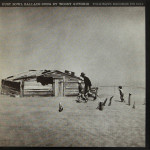 Dust Bowl Ballads – a look at Woody Guthrie’s seminal LP on Folkways: in view of recent reports of a second dust bowl.
Dust Bowl Ballads – a look at Woody Guthrie’s seminal LP on Folkways: in view of recent reports of a second dust bowl.- Night and day diagrams added to The Year for each of the quarter days and cross-quarter days, with also sunrise and sunset times (uploading in progress).
- Winter flood – an addition to the Water-field series – on the winter flooding in 2015/16 and with reference to crop-losses caused by the autumn floods of 2012.
BRONZE AGE NEWS
News from this well preserved bronze age site in Cambridgeshire, including bundles of lime-bark fibres and preserved foods: see the BBC page at Bronze Age houses uncovered …
[12 January 2016]
DUNDEE SCIENCE CENTRE 9 JANUARY 2016
The Living Field will take part in a Biodiversity theme day on Saturday 9 January 2016 at the Dundee Science Centre. Further information at Botany, Bugs and Biodiversity.
Update: A great day at the Science Centre last Saturday. Living Field themes of dye plants and dark materials were on interactive display, together with hands-on microscopes for looking at plant structure and insects. Thanks to Daniel Leybourne, Jenny Slater, Ali Karley, Graham Begg and David Miller from the Hutton and various family members who made themselves indispensable.
[12 January 2016].
WINTER SOLSTICE 2015
Time of the lowest sun. On some recent days, the cloud has been so heavy that it’s as if the twilight lasts all day. Yet is is warm, well above the average, and wet. It was an important time – the winter solstice – important to know that the days were about to get longer, little by little. With the variable cloud, it was hard to tell when the shortest day had arrived. So the neolithic people of these islands built monuments aligned with the sun. The webcams at Maes Howe on Orkney are now live. For more on the solar year, see No life without the sun and Winter solstice at The Year.
[21 December 2015]
IN CASE YOU MISSED IT …..
Celts – Art and Identity at the British Museum 24 September 2015 to 31 January 2016 then at the National Museum of Scotland from 10 March to 25 September 2016.
Shifting sand reveals remains of Bronze Age houses in Orkney. BBC on 9 December 2015.
Late stone age woman with rickets – Vitamin D deficiency, implying absence of sunlight, reasons unclear. Carbon dating of 1912 study confirms burial on Tiree was 3090 to 3340 BC or over 5000 years ago. Source: Culture 24, 21 September 2015.
BIRNAM ARTS
Thanks to Dunkeld and Birnam Historical Society and ‘The Field’ for the invitation to talk on 23 November at Birnam Arts. Geoff Squire’s presentation Food production from the first crops to the present day quoted extensively from Andrew Wights journey’s around Scotland 1778-84. More to follow on Mr Wight. See also Great quantities of aquavitae.
[27 November 2015]
MYSTERY AND INTRIGUE AT THE LIVING FIELD
We’ve been alerted to certain goings on to do with the fictive curator of the Living Field Garden, who turns out to be far from what she seems and probably a bit shady – at least in the world of a novel based around Dundee, in which the Garden and Marianne make an appearance.
Who’s Marianne and what happens to her? Can’t say – you’ll have to wait until someone gets to the end of the book (and even then we won’t tell until everyone else who’s reading it gets to the end).
[12 November 2015]
NEW ON THE WEB SITE
- Customs and festivals around the solar cycle, starting with XQ4, early November.
- More from Reno including Grissel’s dark memory.
- More images and examples in 5000 Years/Fibres
- Article on rice under Water-field (available soon)
[3 November 2015]
IN THE GARDEN
Preparing for the winter! The meadow is being cut. The hay is drying. The cereals collection is all harvested and the plants drying out in the cabins. The potatoes – Mayan Gold and Lady Balfour – are uplifted and tasting good. Swedes, parsips, red beet, leeks and cabbage will be harvested over the weeks and months. Images at The Garden.
[2 October 2015]
NEW ON THE WEB SITE
- New pages opened under 5000-Plants on Crop-weeds, those plants, now common in and around fields, that originate from the main crops – oilseed rape, potato, barley, wheat, oat and bean; notes of their role in the ecology and economy of the croplands.
- More from Reno on strange white objects appearing in the countryside.
- Recent images from the Living Field garden.
[29 August 2015]
EMPIRE EXHIBITION AT MONTROSE
A Society of Scottish Artist’s members exhibition begins 25 July and runs until 29 August at The Old Ropeworks, Montrose. Jean Duncan will be exhibiting recent drawings, etchings and paintings based on a plant – the tree peony – brought back from China, lived in Angus for a time and now growing at the Botanic Gardens, Edinburgh.
See poster and images. Web site at Wall Projects.
[23 July 2015]
NEW ON THE WEB SITE
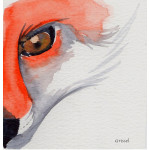
- Reno‘s philosophical take on fox hunting with horses and dogs; also badgers.
- More photos of river views and life from the Urban Field article Mekong and Tay
[15 July 2015]
PLUTO FLYPAST
To see images of Pluto during this amazing event on 14 July 2015 and find out more about Pluto ‘the planet’ and the boundary of the solar system:
- NASA web pages on New Horizons
- BBC Newsbeat article on Pluto
[14 July 2015]
BUSY BEES VISIT THE LIVING FIELD GARDEN
Children from Busy Bees Nursery came to the Living Field to look around the garden, see how to mill grain and make dough from flour and examine beetles and spiders. The real bees were out and about in great numbers, feeding off the field scabious, foxglove, viper’s bugloss and many of the other plants on flower.
[9 July 2015]
NEW ON THE WEB SITE
- Fixers 1 begins a new series on nitrogen fixing legumes starting with a selection from the Angus coastline – see also Kidney vetch and the Small Blue
- New material and images to Fibres the first of the 5000 Years – Plants pages
- Latest images of the Garden
[29 June 2015]
VISIT BY AGROPARISTECH STUDENTS 15 June 2015
The Living Field cabins hosted a visit to the Institute on 15 June of about 20 students and staff from AgroParisTech, a University in Paris France, hosted by Farm Manager Euan Caldwell. Cathy Hawes and Graham Begg presented work on the Centre for Sustainable Cropping and landscape ecology.
OPEN FARM SUNDAY A GREAT SUCCESS 8 JUNE 2015
Over 1500 people visited the Hutton yesterday, 7 June, for Open Farm Sunday. The weather held sunny most of the time. Hundreds of families visited the Garden and the events held in and around it.
Events held in the Garden included Grain to Plate (cereals, grain, bread), DundeeAstro, the seed-in-the-landscape (seed=marble) game, and Dark Materials (a quizzical treasure hunt of roots for eating, healing and dyeing).
Many thanks to all visitors.
DUNDEEASTRO BACK AT OPEN FARM SUNDAY
Our friends from Dundee Astronomical Society will be back with their knowledge of stars and planets at this years Open Farm Sunday on 7 June 2015.
See further images at the Living Field’s dundeeastro page and their own informative web site.
NEW ON THE WEB SITE 31 May 2015
Some new entries on the web site.
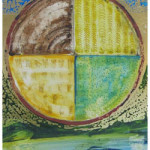 More of Jean Duncan’s art on themes of the solar cycle, early agriculture and useful plants at Anniversary designs and sketches
More of Jean Duncan’s art on themes of the solar cycle, early agriculture and useful plants at Anniversary designs and sketches- A tempter for the Grain to plate exhibit at Open Farm Sunday on 7 June
PLANTING AND SOWING 30 May 2015
Much activity in the garden this past week. Gladys and Jackie, with several of Ralph’s helpers managed to plant the remaining temperate cereals for the 2015 display and sowed a range of ‘roots’ under fleece. Just the tropical cereals to go in now.
The medicinals bed received seedlings of opium poppy and corncockle. Further rearrangements and transplantings of wild carrot, salad burnet and hemp-agrimony.
Paul from the farm cut some of the grassy areas in preparation for Open Farm Sunday to be held on 7 June.
DRAGONFLY WOOD SCULPTURE 29 May 2015
Dave Roberts’ dragonfly sculpture was installed in the meadow.
Stunning addition to the garden and great effort all round – thanks to the mechanics for fixing the stand.
For more photos see New wood sculpture.
[Page began late May 2015]



